Telit Communications S p A LE70FH FHSS and DTS Module User Manual 1VV0301106 xE70 915 RF module User Guide r3
Telit Communications S.p.A. FHSS and DTS Module 1VV0301106 xE70 915 RF module User Guide r3
User Manual
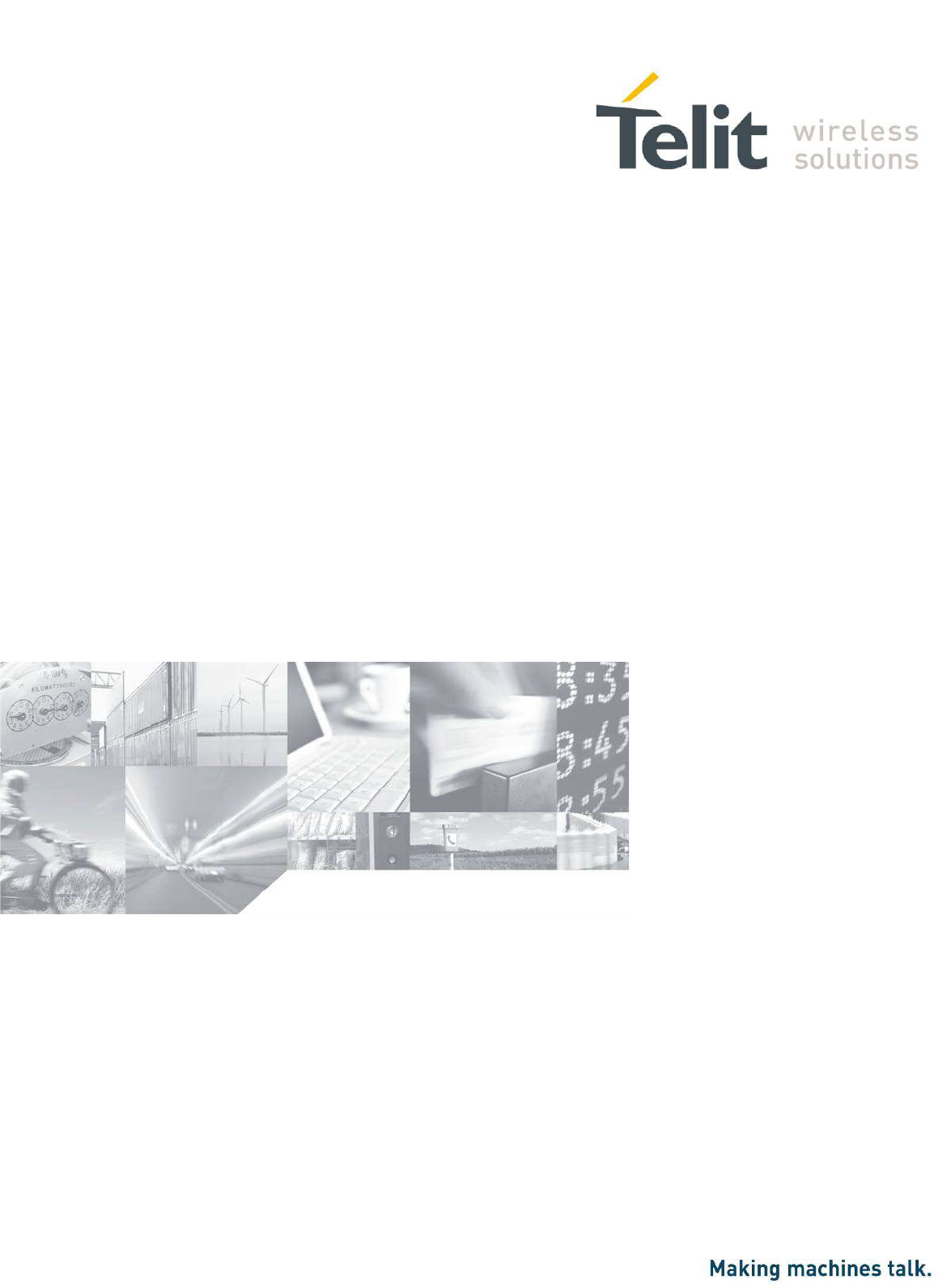
xE70-915 RF Module User Guide
1VV0301106
rev.3 – 2015-03-04
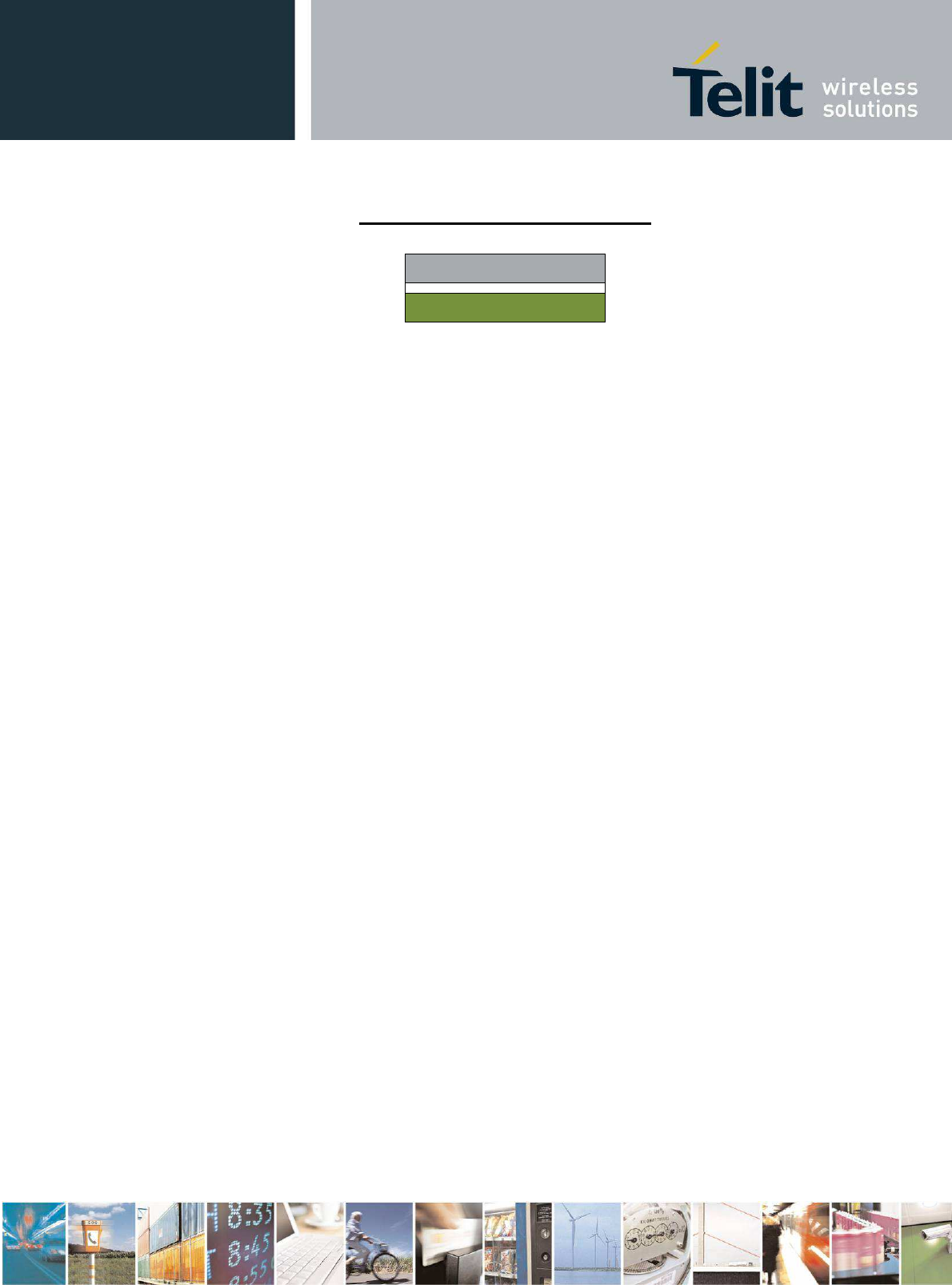
xE70-915 RF Module User Guide
1VV0301106 rev.3 – 2015-03-04
Reproduction forbidden without written authorization from Telit Communications S.p.A. - All Rights
Reserved. Page 2 of 34
APPLICABILITY TABLE
PRODUCT
LE70-915
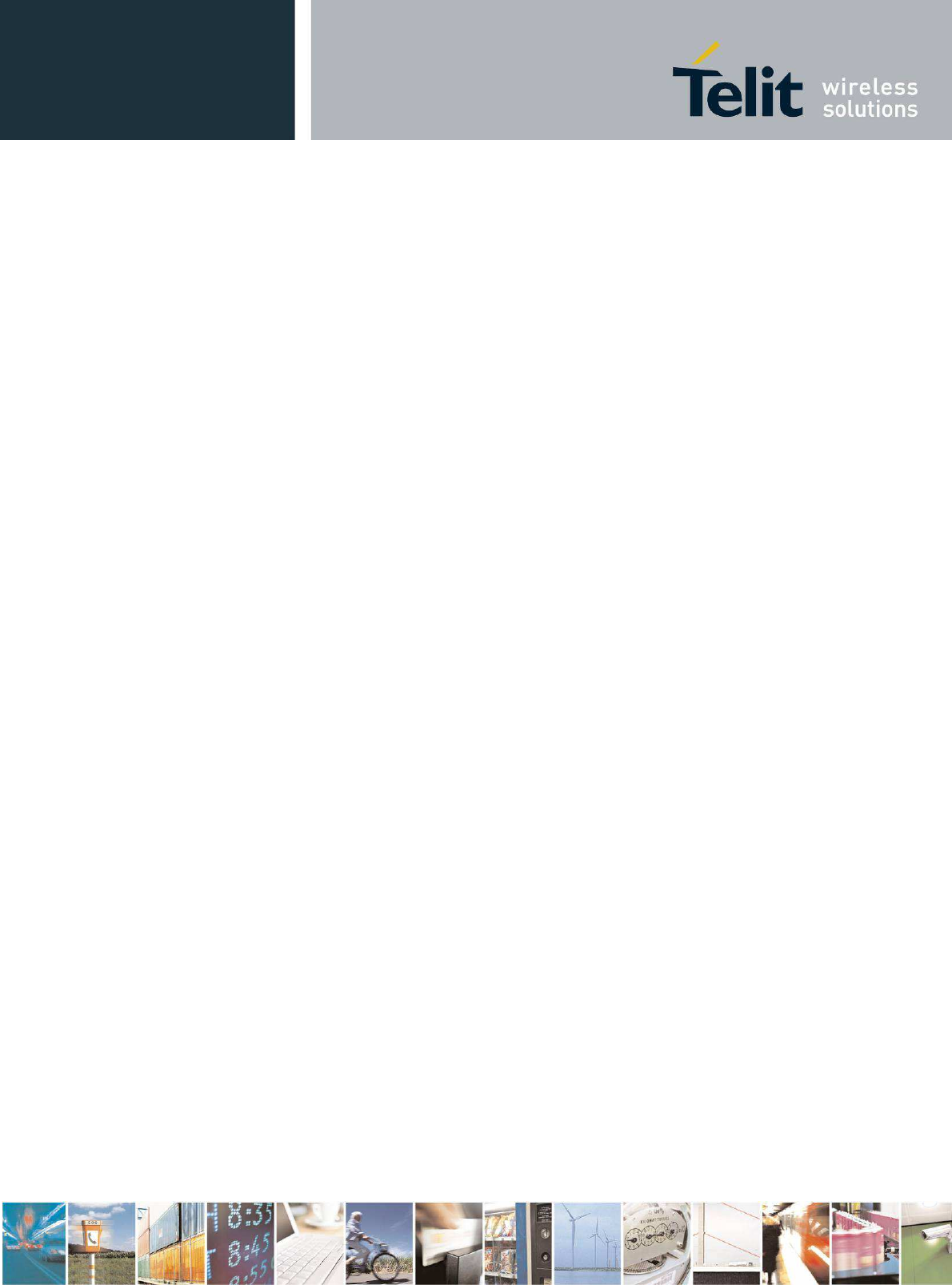
xE70-915 RF Module User Guide
1VV0301106 rev.3 – 2015-03-04
Reproduction forbidden without written authorization from Telit Communications S.p.A. - All Rights
Reserved. Page 3 of 34
SPECIFICATIONS SUBJECT TO CHANGE WITHOUT NOTICE
Notice
While reasonable efforts have been made to assure the accuracy of this document, Telit
assumes no liability resulting from any inaccuracies or omissions in this document, or from
use of the information obtained herein. The information in this document has been carefully
checked and is believed to be entirely reliable. However, no responsibility is assumed for
inaccuracies or omissions. Telit reserves the right to make changes to any products described
herein and reserves the right to revise this document and to make changes from time to time
in content hereof with no obligation to notify any person of revisions or changes. Telit does
not assume any liability arising out of the application or use of any product, software, or
circuit described herein; neither does it convey license under its patent rights or the rights of
others.
It is possible that this publication may contain references to, or information about Telit
products (machines and programs), programming, or services that are not announced in your
country. Such references or information must not be construed to mean that Telit intends to
announce such Telit products, programming, or services in your country.
Copyrights
This instruction manual and the Telit products described in this instruction manual may be,
include or describe copyrighted Telit material, such as computer programs stored in
semiconductor memories or other media. Laws in the Italy and other countries preserve for
Telit and its licensors certain exclusive rights for copyrighted material, including the
exclusive right to copy, reproduce in any form, distribute and make derivative works of the
copyrighted material. Accordingly, any copyrighted material of Telit and its licensors
contained herein or in the Telit products described in this instruction manual may not be
copied, reproduced, distributed, merged or modified in any manner without the express
written permission of Telit. Furthermore, the purchase of Telit products shall not be deemed
to grant either directly or by implication, estoppel, or otherwise, any license under the
copyrights, patents or patent applications of Telit, as arises by operation of law in the sale of a
product.
Computer Software Copyrights
The Telit and 3rd Party supplied Software (SW) products described in this instruction manual
may include copyrighted Telit and other 3rd Party supplied computer programs stored in
semiconductor memories or other media. Laws in the Italy and other countries preserve for
Telit and other 3rd Party supplied SW certain exclusive rights for copyrighted computer
programs, including the exclusive right to copy or reproduce in any form the copyrighted
computer program. Accordingly, any copyrighted Telit or other 3rd Party supplied SW
computer programs contained in the Telit products described in this instruction manual may
not be copied (reverse engineered) or reproduced in any manner without the express written
permission of Telit or the 3rd Party SW supplier. Furthermore, the purchase of Telit products
shall not be deemed to grant either directly or by implication, estoppel, or otherwise, any
license under the copyrights, patents or patent applications of Telit or other 3rd Party supplied
SW, except for the normal non-exclusive, royalty free license to use that arises by operation
of law in the sale of a product.
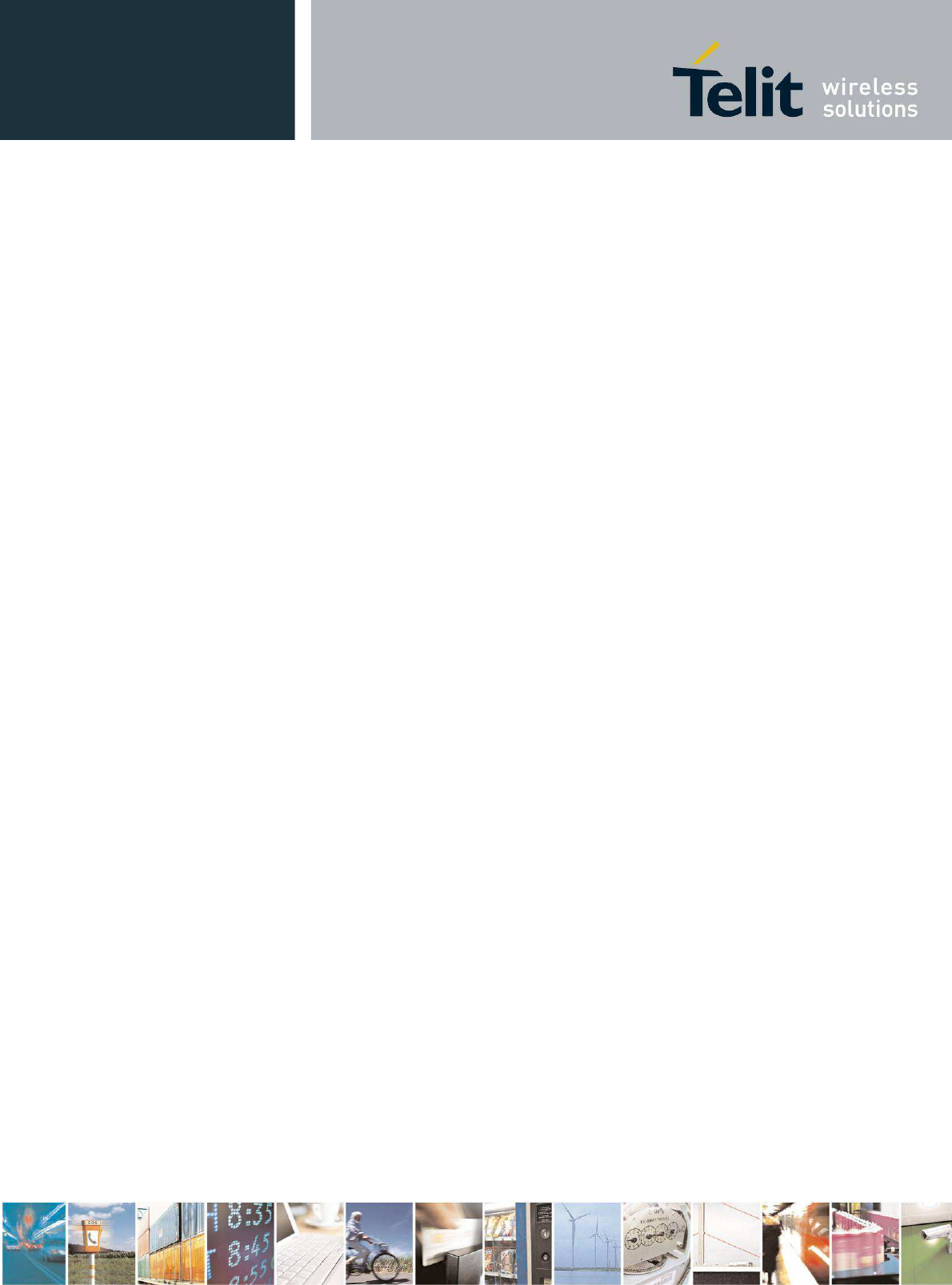
xE70-915 RF Module User Guide
1VV0301106 rev.3 – 2015-03-04
Reproduction forbidden without written authorization from Telit Communications S.p.A. - All Rights
Reserved. Page 4 of 34
Usage and Disclosure Restrictions
License Agreements
The software described in this document is the property of Telit and its licensors. It is
furnished by express license agreement only and may be used only in accordance with the
terms of such an agreement.
Copyrighted Materials
Software and documentation are copyrighted materials. Making unauthorized copies is
prohibited by law. No part of the software or documentation may be reproduced, transmitted,
transcribed, stored in a retrieval system, or translated into any language or computer language,
in any form or by any means, without prior written permission of Telit
High Risk Materials
Components, units, or third-party products used in the product described herein are NOT
fault-tolerant and are NOT designed, manufactured, or intended for use as on-line control
equipment in the following hazardous environments requiring fail-safe controls: the operation
of Nuclear Facilities, Aircraft Navigation or Aircraft Communication Systems, Air Traffic
Control, Life Support, or Weapons Systems (High Risk Activities"). Telit and its supplier(s)
specifically disclaim any expressed or implied warranty of fitness for such High Risk
Activities.
Trademarks
TELIT and the Stylized T Logo are registered in Trademark Office. All other product or
service names are the property of their respective owners.
Copyright © Telit Communications S.p.A.
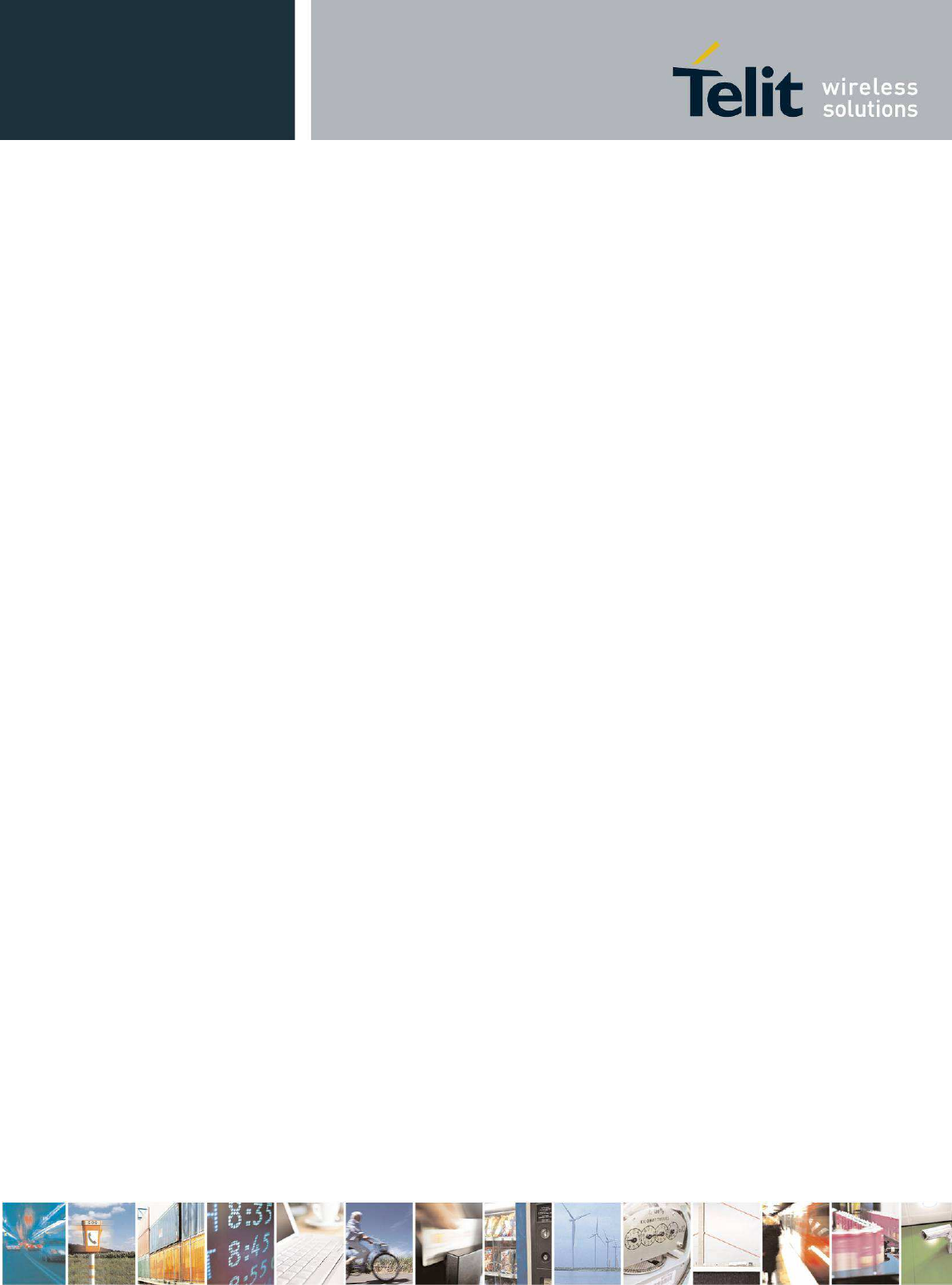
xE70-915 RF Module User Guide
1VV0301106 rev.3 – 2015-03-04
Reproduction forbidden without written authorization from Telit Communications S.p.A. - All Rights
Reserved. Page 5 of 34
Contents
1.
Introduction ................................................. 7
1.1.
Scope ..................................................... 7
1.2.
xE70-915 Product Description .............................. 7
1.3.
Audience .................................................. 7
1.4.
Contact Information, Support .............................. 7
1.5.
Text Conventions .......................................... 8
1.6.
Related Documents ......................................... 8
2.
Regulatory Conformance Information ........................... 9
2.1.
Operational Frequency Bands ............................... 9
2.1.1. 915 MHz band Requirements ................................... 9
2.2.
Other Regulatory Requirements ............................. 9
3.
General Features ............................................ 10
3.1.
Main Functionalities ..................................... 10
3.2.
Software ................................................. 10
3.3.
Temperature Requirements ................................. 10
3.4.
Mechanical Specifications ................................ 11
3.5.
Mechanical dimensions .................................... 12
3.6.
DC Specifications ........................................ 13
3.7.
Radio Specifications ..................................... 14
3.8.
Digital Specifications ................................... 15
3.9.
Absolute Maximum Ratings ................................. 15
3.10.
Ordering Information ................................... 15
4.
Pin-out and Signals Description ............................. 17
4.1.
Module Pin-out (Top View) ................................ 17
4.2.
Module Pin-out Table ..................................... 18
4.3.
Pin-out of the Module DIP ................................ 19
4.4.
DIP – Module Pin-out Correspondence Table ................ 20
4.5.
Signals Description ...................................... 21
5.
Process Information ......................................... 22
5.1.
Delivery ................................................. 22
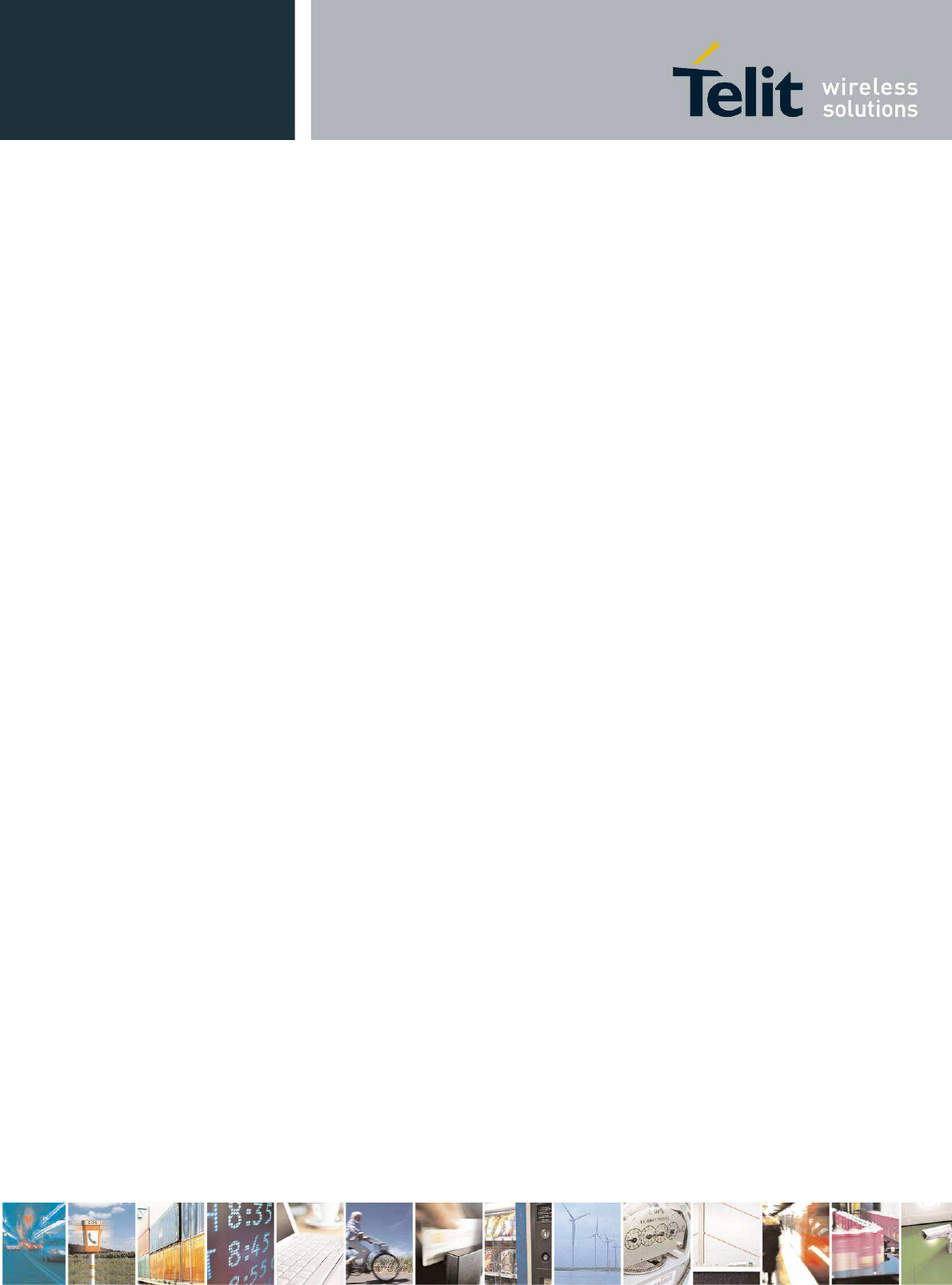
xE70-915 RF Module User Guide
1VV0301106 rev.3 – 2015-03-04
Reproduction forbidden without written authorization from Telit Communications S.p.A. - All Rights
Reserved. Page 6 of 34
5.2.
Storage .................................................. 23
5.3.
Soldering pad pattern .................................... 23
5.4.
Solder paste ............................................. 24
5.5.
Placement ................................................ 24
5.6.
Soldering Profile (RoHS Process) ......................... 24
6.
Board Mounting Recommendation ............................... 26
6.1.
Electrical environment ................................... 26
6.2.
Power supply decoupling on xE70-915 module ............... 26
6.3.
RF layout considerations ................................. 27
6.4.
Antenna connections on printed circuit boards ............ 28
6.5.
xE70-868/915 Interfacing ................................. 29
7.
Safety Recommendations ...................................... 32
8.
Glossary .................................................... 33
9.
Document History ............................................ 34
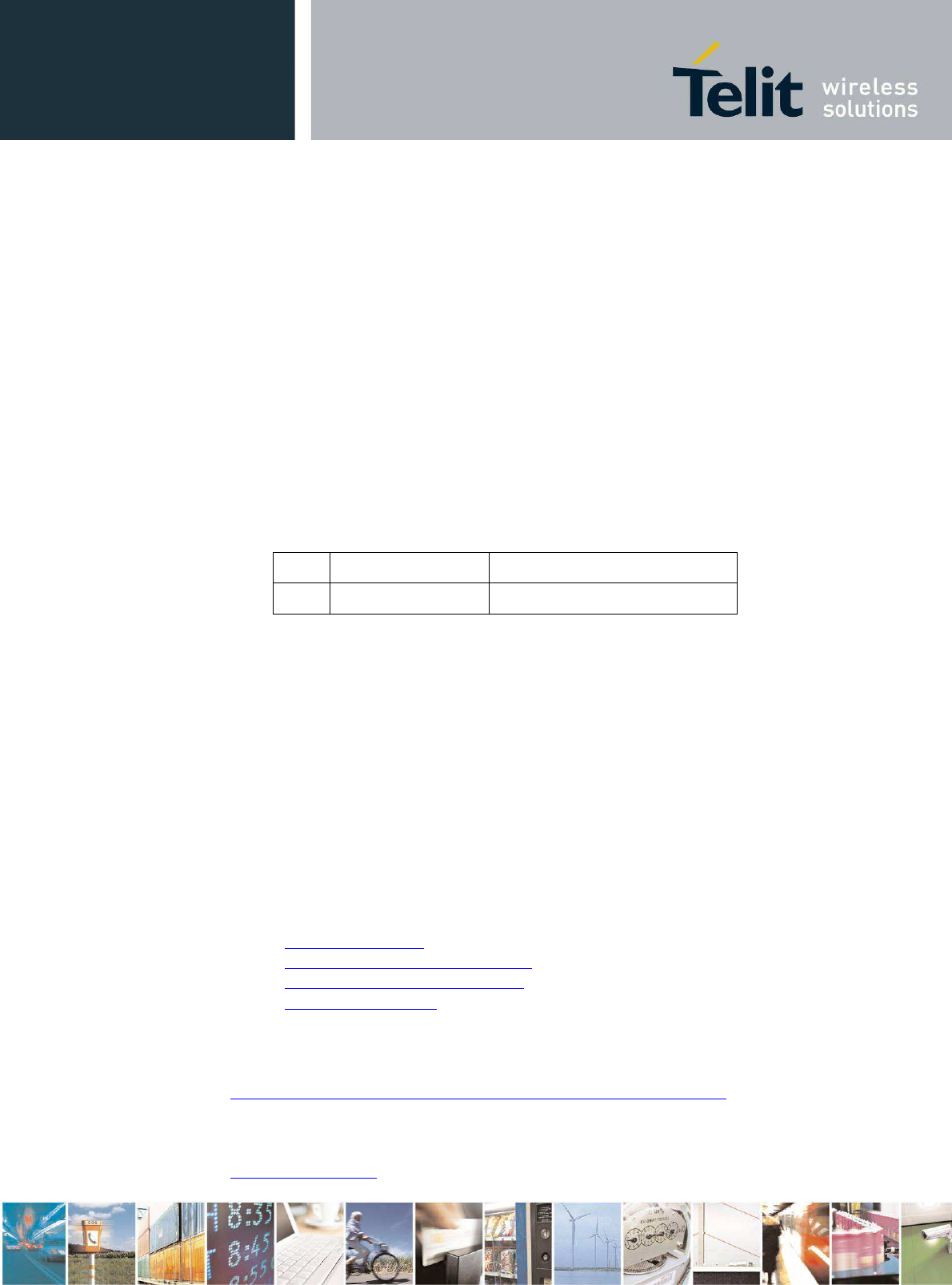
xE70-915 RF Module User Guide
1VV0301106 rev.3 – 2015-03-04
Reproduction forbidden without written authorization from Telit Communications S.p.A. - All Rights
Reserved. Page 7 of 34
1. Introduction
1.1. Scope
Scope of this document is to present the features and the application of the Telit xE70-915
radio modules.
1.2. xE70-915 Product Description
The xE70-915 module is a multi-channel radio board, delivering up to 500mW in Frequency
Hopping technology. It is compliant with the FCC Code of Federal Regulations [1] in the 915
MHz ISM unlicensed frequency band.
It is delivered with preloaded protocol stack:
“x” Product name Stack functionality
L LE70-915 FH Star Network
xE70-915 is pin-to-pin compatible with LE, NE and ME modules working at different
frequencies, in particular xE50-868 and xE70-868.
xE70-915 is also pin-to-pin compatible with Telit ZE Family (ZigBee 2007 and ZigBee PRO
stack).
1.3. Audience
This document is intended for developers using Telit xE70-915 radio modules.
1.4. Contact Information, Support
For general contact, technical support, to report documentation errors and to order manuals,
contact Telit Technical Support Center (TTSC) at:
TS-SRD@telit.com
TS-NORTHAMERICA@telit.com
TS-LATINAMERICA@telit.com
TS-APAC@telit.com
Alternatively, use:
http://www.telit.com/en/products/technical-support-center/contact.php
For detailed information about where you can buy the Telit modules or for recommendations
on accessories and components visit:
http://www.telit.com
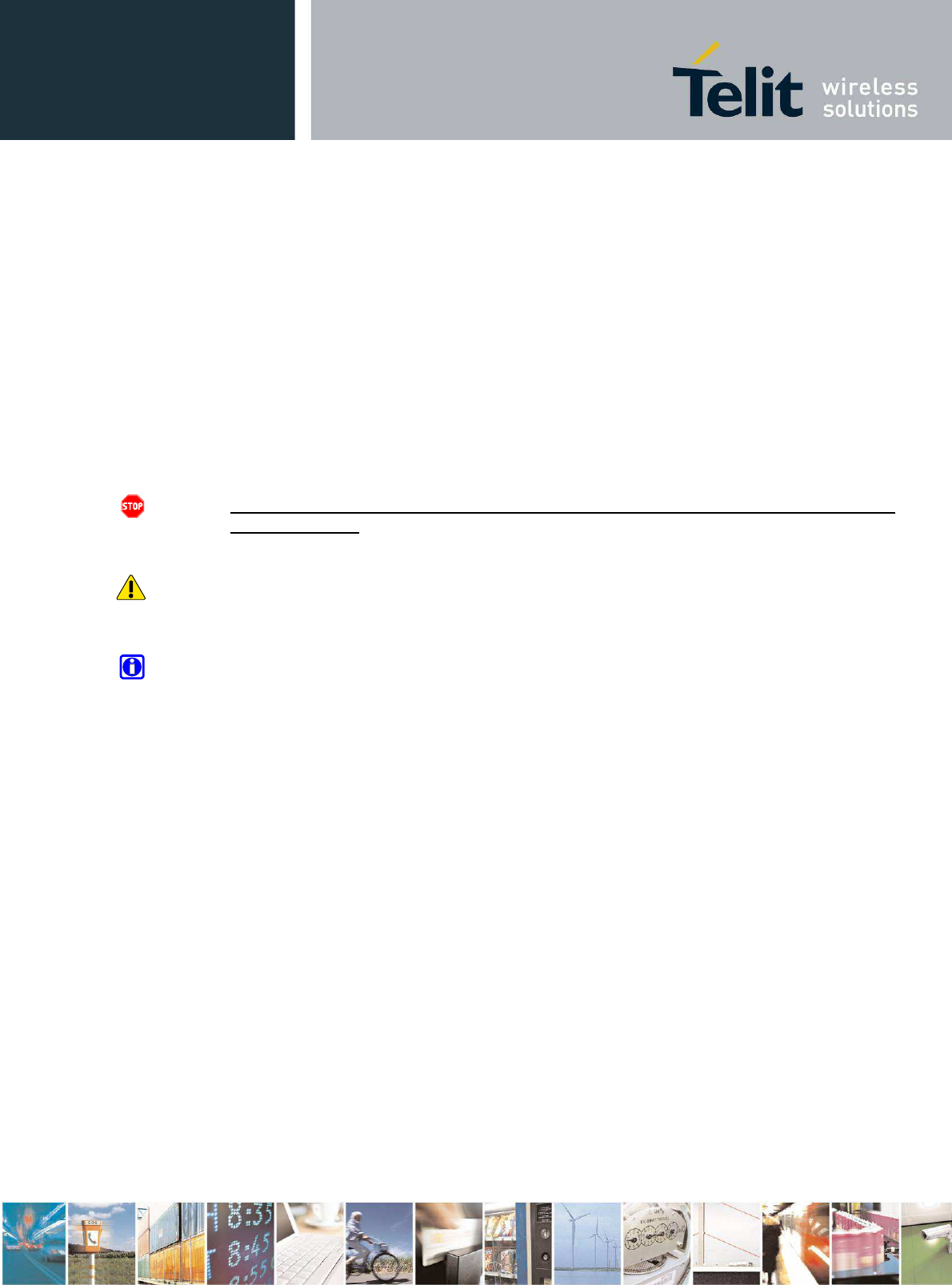
xE70-915 RF Module User Guide
1VV0301106 rev.3 – 2015-03-04
Reproduction forbidden without written authorization from Telit Communications S.p.A. - All Rights
Reserved. Page 8 of 34
To register for product news and announcements or for product questions contact Telit
Technical Support Center (TTSC).
Our aim is to make this guide as helpful as possible. Keep us informed of your comments and
suggestions for improvements.
Telit appreciates feedback from the users of our information.
1.5. Text Conventions
Danger – This information MUST be followed or catastrophic equipment failure or bodily
injury may occur.
Caution or Warning – Alerts the user to important points about integrating the module, if
these points are not followed, the module and end user equipment may fail or malfunction.
Tip or Information – Provides advice and suggestions that may be useful when
integrating the module.
All dates are in ISO 8601 format, i.e. YYYY-MM-DD.
1.6. Related Documents
• [1] Code of Federal Regulations, Title 47, Part 15
• [2] Frequency Hopping Star Network Protocol Stack User Guide, 1vv0301059
• [3] SR Tool User Guide, 1vv0300899
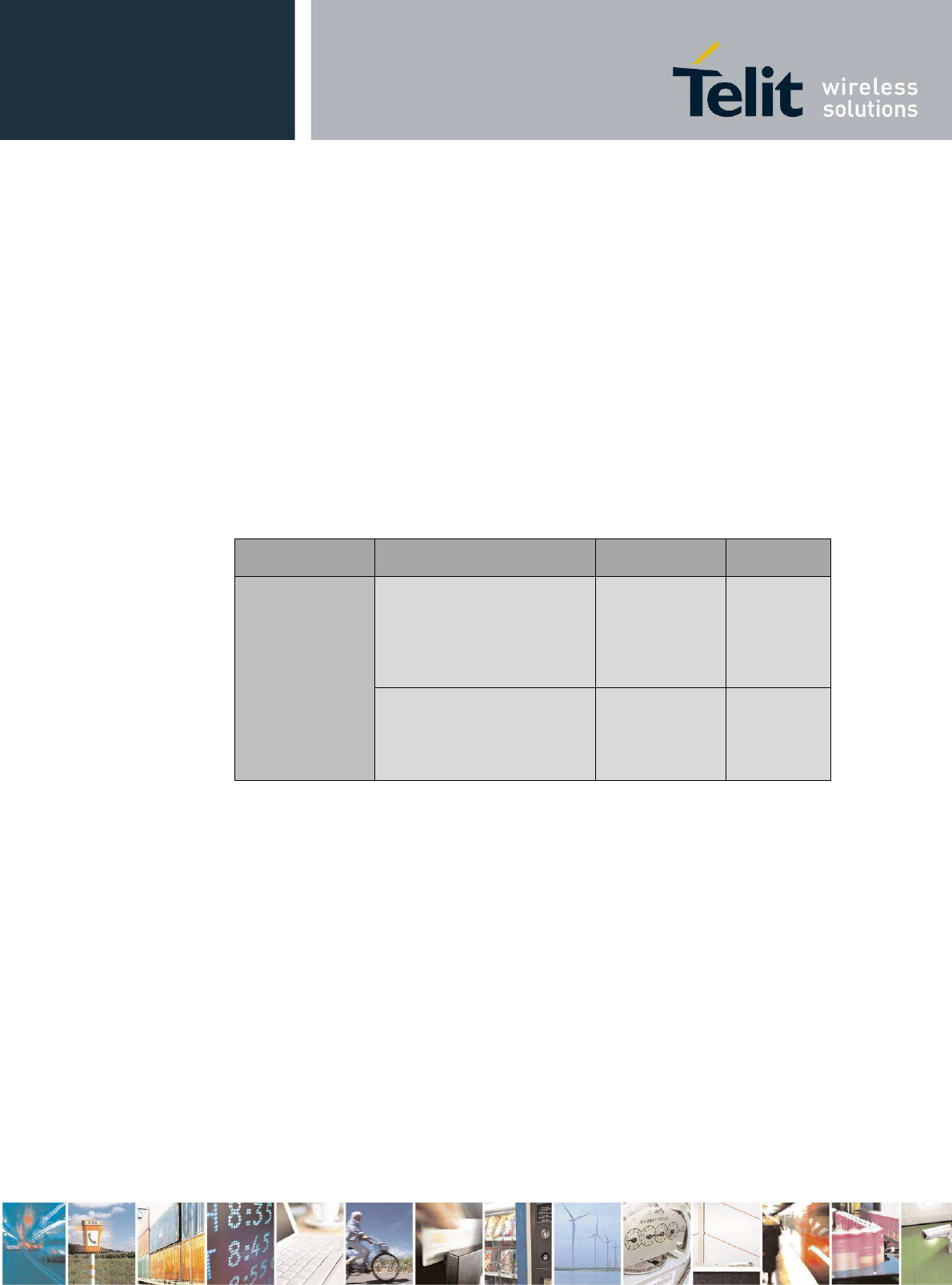
xE70-915 RF Module User Guide
1VV0301106 rev.3 – 2015-03-04
Reproduction forbidden without written authorization from Telit Communications S.p.A. - All Rights
Reserved. Page 9 of 34
2. Regulatory Conformance Information
2.1. Operational Frequency Bands
The module radio transmitter operations must be compliant with some regulatory
requirements in terms of frequency bands and emitted power, as detailed below.
2.1.1. 915 MHz Band Requirements
The FCC part 15.247 regulates the frequency hopping RF devices, and gives the
following requirements:
Frequency Band Channel spacing Maximum
radiated power Hopping
cycle
902-928 MHz
25< “20dB BW” < 250kHz 1W
<0.4s each
20s<0.4s each
20s,
50 hop. Freq
min
250 < “20dB BW” < 500kHz 250mW
<0.4s each
10s,
25 hop. Freq.
min
The main requirements of the FCC regulation are given in [1].
The xE70-915 module operates in the ISM band. This band is free to use but the module and
the user must respect some limitations. Most of these restrictions are integrated in the
conception of the module.
2.2. Other Regulatory Requirements
The module complies with the European Directive 2002/95/EC concerning the Restrictive
Usage of Hazardous Substances (RoHS).
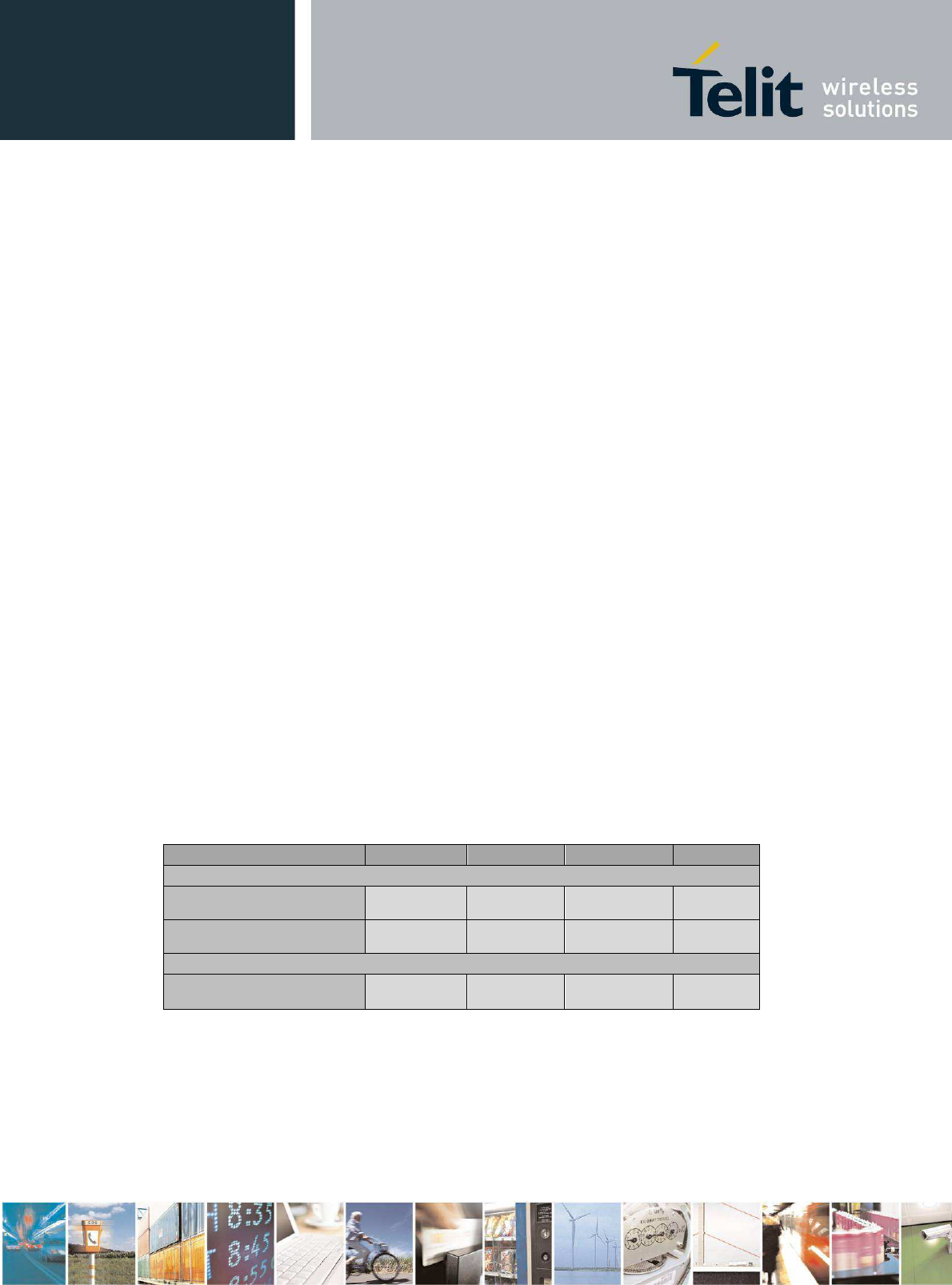
xE70-915 RF Module User Guide
1VV0301106 rev.3 – 2015-03-04
Reproduction forbidden without written authorization from Telit Communications S.p.A. - All Rights
Reserved. Page 10 of 34
3. General Features
3.1. Main Functionalities
The xE70-915 module is a complete solution from serial interface to RF interface. The xE70-
915 module has a digital part and a RF part. The radio link is a Half Duplex bi-directional
link.
The digital part has the following functionalities:
• Communication interface
• I/O management
• Micro controller with embedded Telit Software Stack
The RF part has the following functionalities:
• Frequency synthesis
• Front-end
• Low noise reception
• Power amplification
• Packet handling
3.2. Software
The xE70-915 module is provided pre-flashed with Telit in-house stack.
Please refer to Protocol Stack User Guides [2] for detailed information.
3.3. Temperature Requirements
Minimum Typical Maximum Unit
Operating
Temperature - 40 25 + 85 °C
Relative humidity @ 25°C
20 75 %
Storage
Temperature - 40 25 + 85 °C
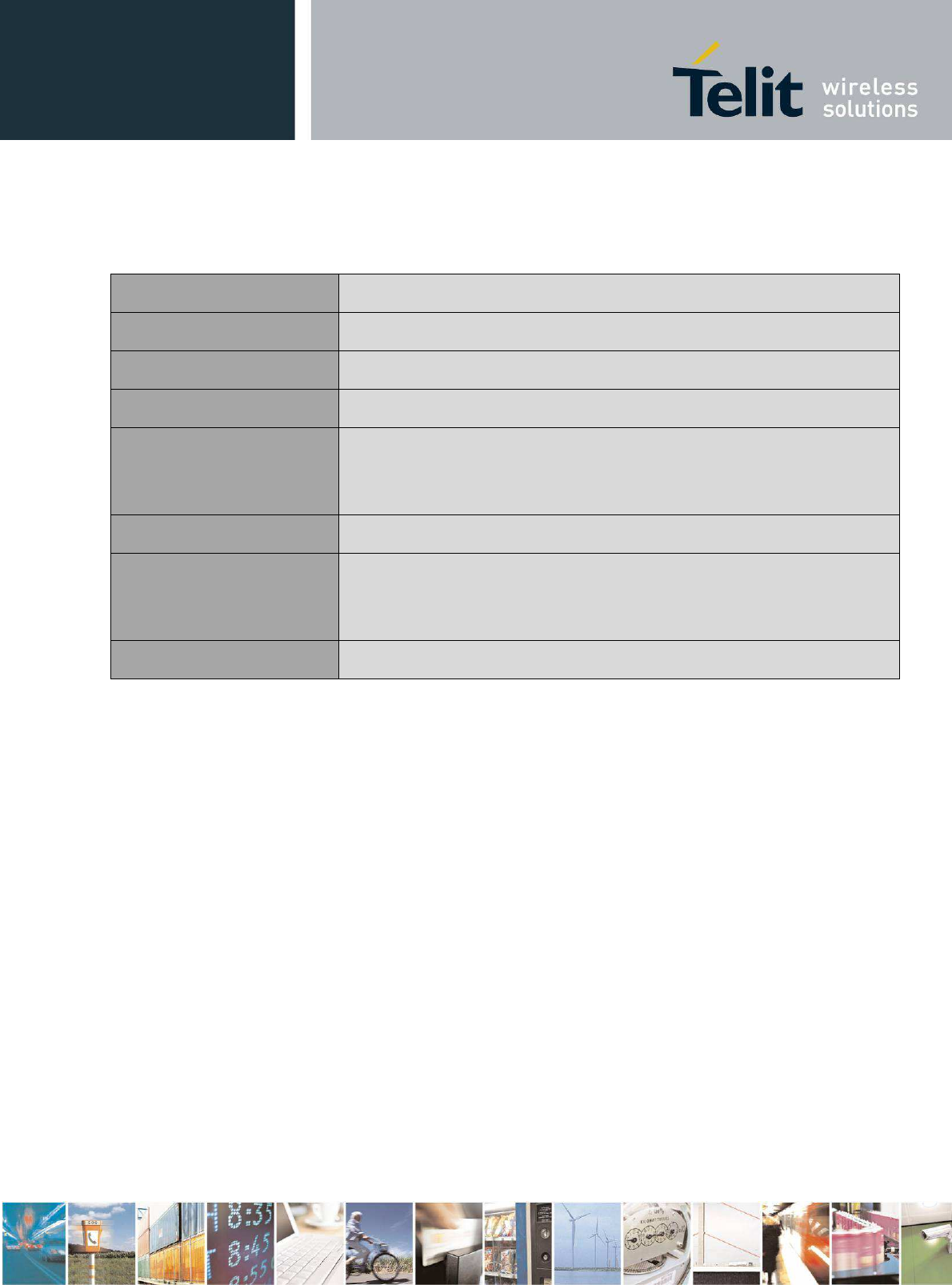
xE70-915 RF Module User Guide
1VV0301106 rev.3 – 2015-03-04
Reproduction forbidden without written authorization from Telit Communications S.p.A. - All Rights
Reserved. Page 11 of 34
3.4. Mechanical Specifications
Size Rectangular 25.8 x 15 mm
Height 3 mm
Weight 1.7 g
PCB thickness 0.8 mm
Cover Mounted above SMD components for EMI reduction and automatic placement
• Dimensions : 25 x 14.2 x 2.2mm
• Thickness : 200µm
Components All SMD components, on one side of the PCB.
Mounting Suitable for RoHS reflow process
• SMD
• LGA on the 4 external sides
Number of pins 30
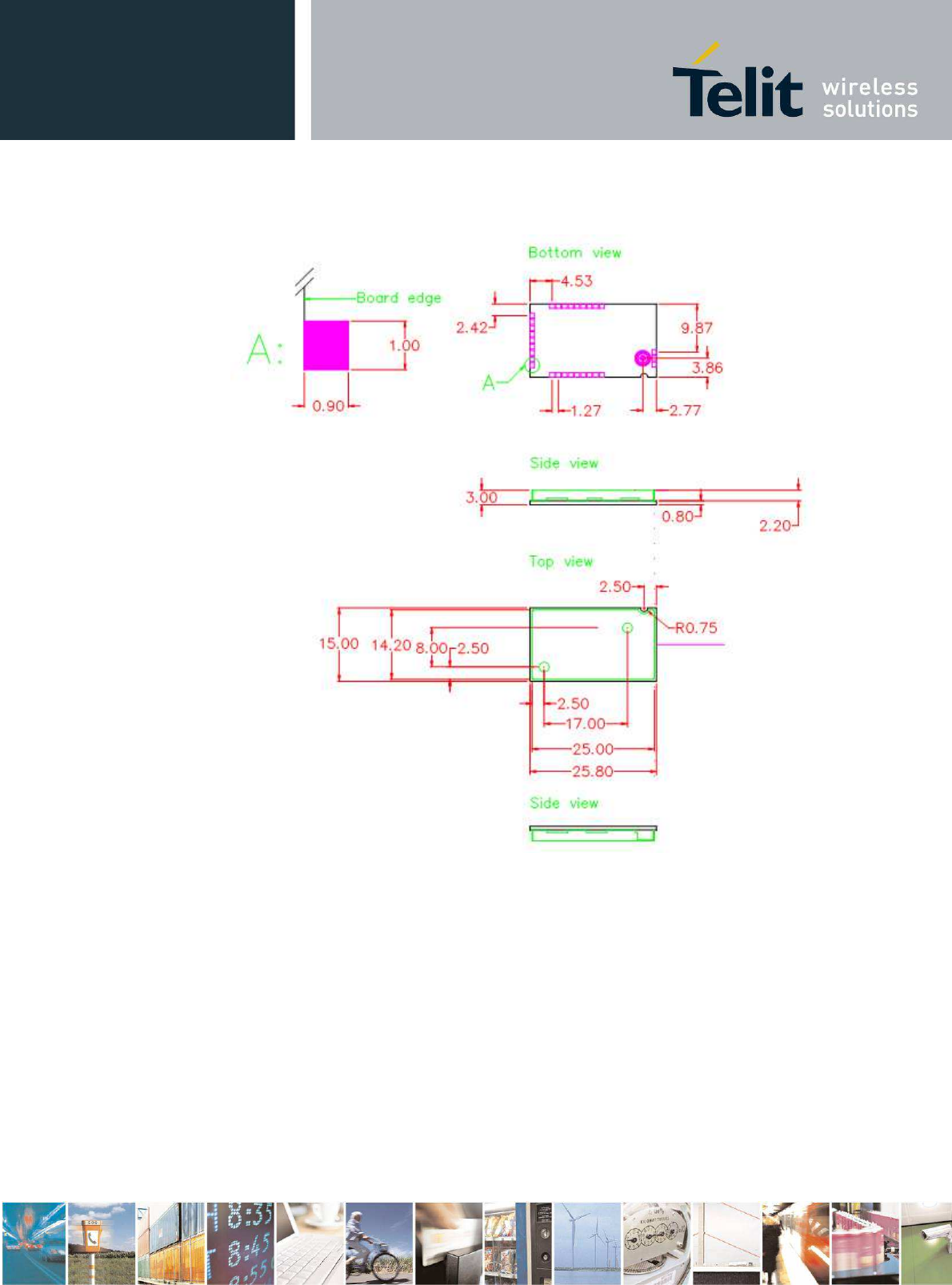
xE70-915 RF Module User Guide
1VV0301106 rev.3 – 2015-03-04
Reproduction forbidden without written authorization from Telit Communications S.p.A. - All Rights
Reserved. Page 12 of 34
3.5. Mechanical dimensions

xE70-915 RF Module User Guide
1VV0301106 rev.3 – 2015-03-04
Reproduction forbidden without written authorization from Telit Communications S.p.A. - All Rights
Reserved. Page 13 of 34
3.6. DC Specifications
Measured on DIP interface with T = 25°C, under 50Ω impedance connected to RF port and
default power register setting if nothing else stated.
Max limits apply over the entire operating range, T=-40°C to +85°C, Vdd=2.3V to 3.6V and
all channels.
Characteristics xE70-915 Min. Typ. Max. Unit
Power Supply (V
DD
) +2.3 - +3.6 V
Consumption at 3.6V
Maximum output power 500mW
(+27dBm)
390 420 mA
Reception
25 30 mA
Stand-by (32.768 kHz On)
2 3 µA
I/O low level GND - 0.2x V
DD
V
I/O high level 0.8x V
DD
- V
DD
V
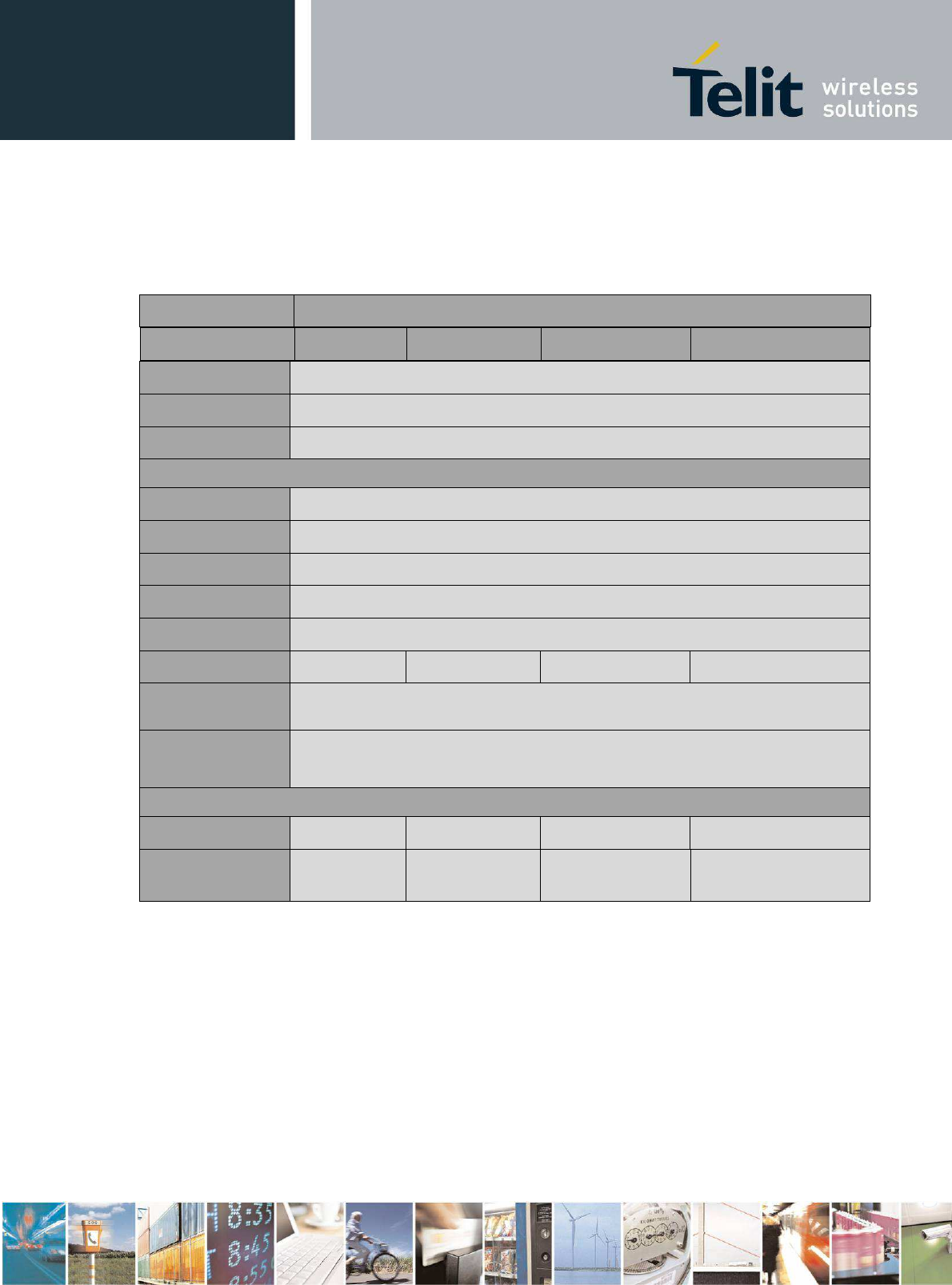
xE70-915 RF Module User Guide
1VV0301106 rev.3 – 2015-03-04
Reproduction forbidden without written authorization from Telit Communications S.p.A. - All Rights
Reserved. Page 14 of 34
3.7. Radio Specifications
Measured on DIP interface at T = 25°C, Vdd = 3.6V, 50 Ω impedance and default power
register setting if nothing else stated.
Frequency Band 902 MHz - 928 MHz
RF data rate
9.6 kbps 19.2 kbps 38.4 kbps 57.6 kbps
Number of channels 50
Channel spacing 250 kHz
First Channel 915.375 MHz
Transmission
Duty cycle ≤ 10%
Modulation Format 2GFSK
Technology Frequency Hopping
Table of channels 8
Dwell time 350 ms
Deviation ± 7 kHz ± 10 kHz ± 20 kHz ± 30 kHz
Frequency tolerance
at 25°C ± 2.5 kHz
RF Output Power
at 3.6V +27dBm ± 1dB
Reception
Rx filter BW 27 kHz 44 kHz 81 kHz 122 kHz
Sensitivity
for PER < 0.8 (1) -114 dBm -113 dBm -110.5 dBm -108.5 dBm
(1) 20 bytes Data Packet not including preamble length
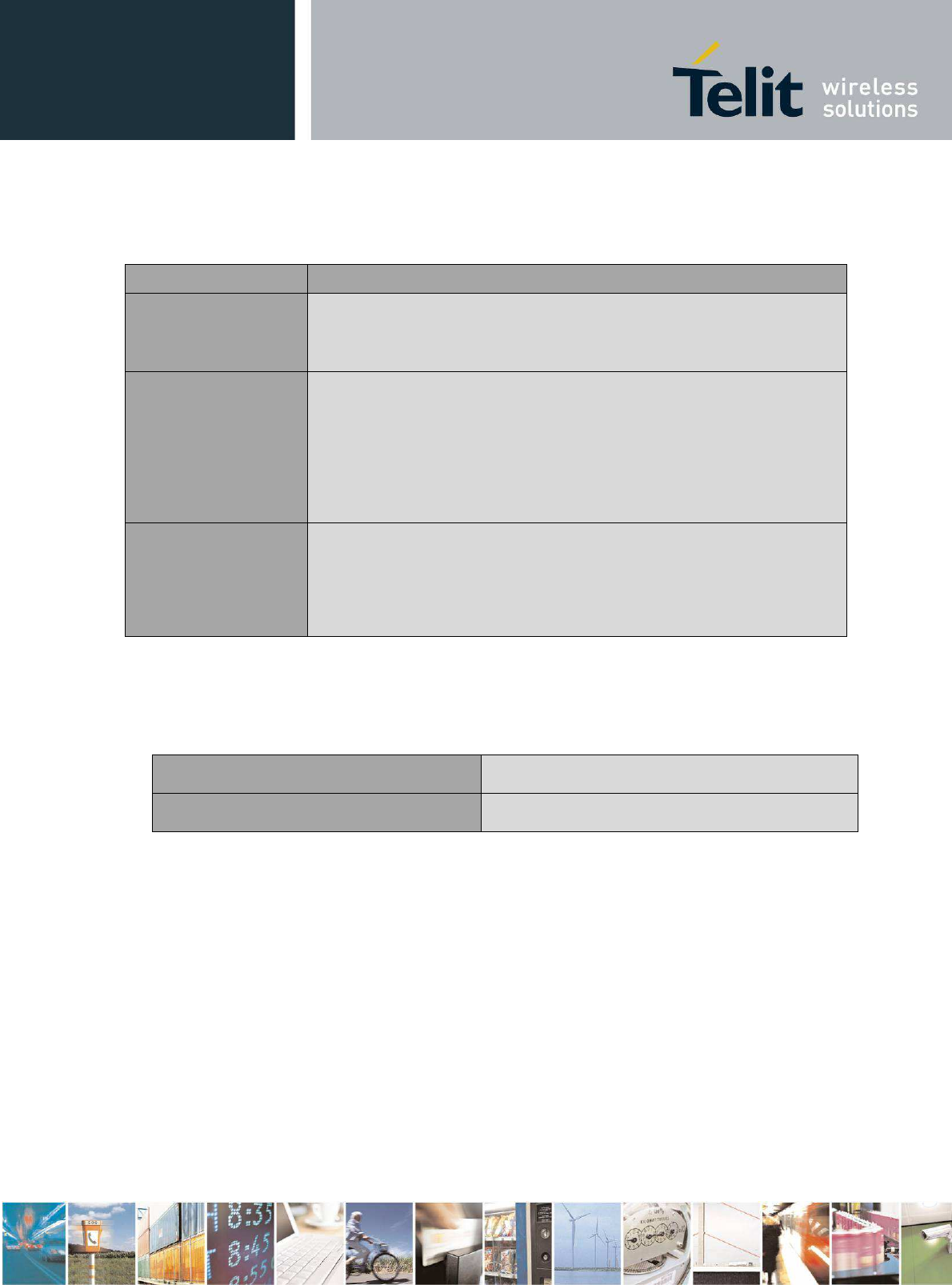
xE70-915 RF Module User Guide
1VV0301106 rev.3 – 2015-03-04
Reproduction forbidden without written authorization from Telit Communications S.p.A. - All Rights
Reserved. Page 15 of 34
3.8. Digital Specifications
Function Characteristics
µC
• 128 kB + 8 kB in system programmable flash
• 8 kB RAM
• 2 kB E
2
PROM
Serial link
• RS232 TTL Full Duplex
• 1200 to 115200 bps
• 7 or 8 bits
• Parity management
• Flow control
o Hardware (RTS/CTS)
Embedded software
functionality
• Flexibility:
o Pre flashed
o Customization capability
o Embedded bootloader for firmware download through serial
link or over the air
3.9. Absolute Maximum Ratings
Voltage applied to Vcc, V
DD
: -0.3V to +3.6V
Voltage applied to “TTL” Input : -0.3V to V
DD
+0.3V
3.10. Ordering Information
The following equipments can be ordered:
• The SMD version (LE70-915)
• The DIP interface version (LE70-915)
• The Demo Kit (LE70-915) composed by n.2 EVK board, n.2 DIP interface boards,
n.2 RF antennas, n.2 USB cables, n.2 batteries 9V.
The versions below are considered standard and should be readily available. For other
versions, please contact Telit. Please make sure to give the complete part number when
ordering.
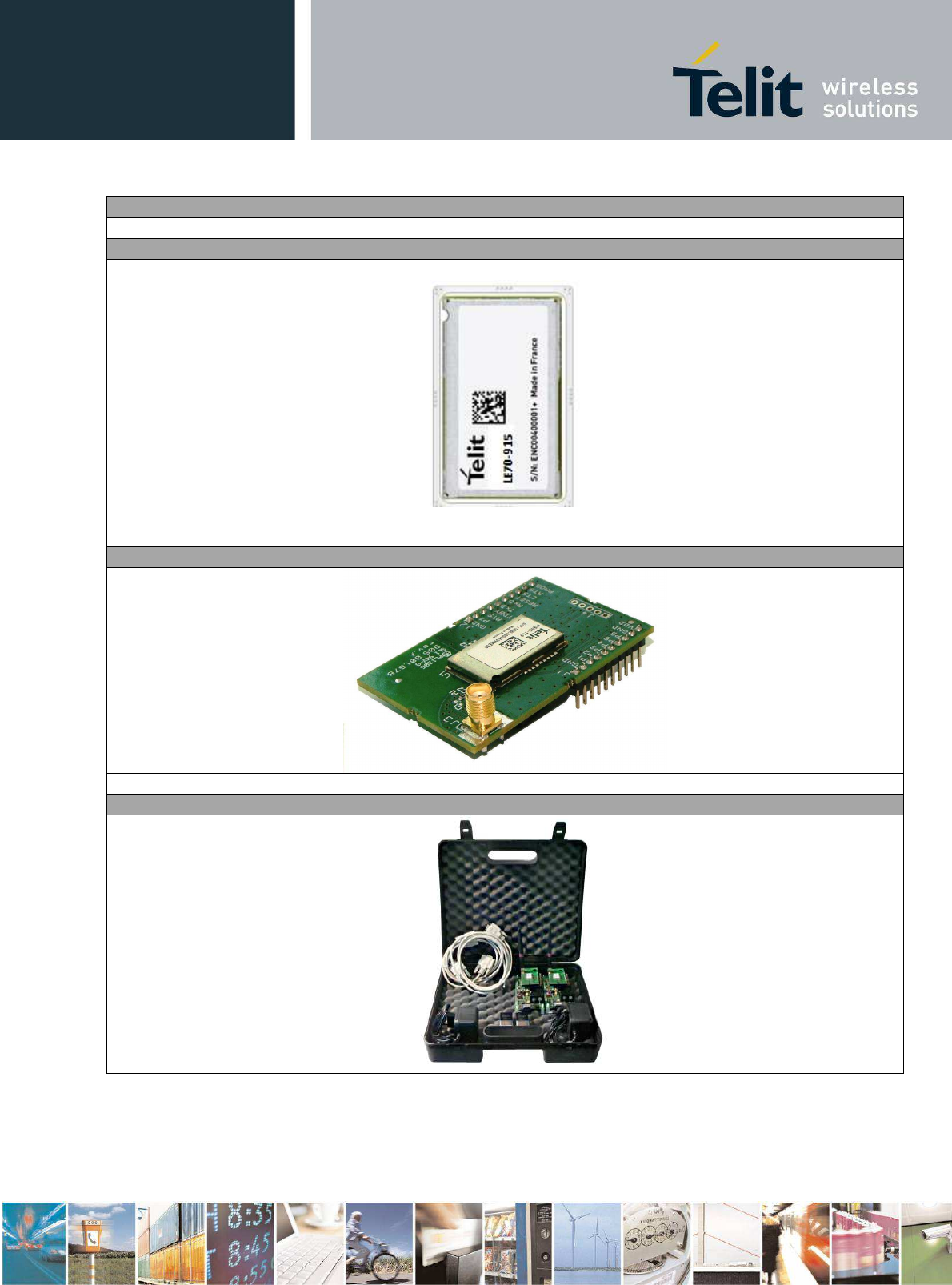
xE70-915 RF Module User Guide
1VV0301106 rev.3 – 2015-03-04
Reproduction forbidden without written authorization from Telit Communications S.p.A. - All Rights
Reserved. Page 16 of 34
Equipment and Part Number
SMD Version
B LE70-915/SMD
DIP Version
B LE70-915/DIP
Demo Case
D LE70-915 DemKit
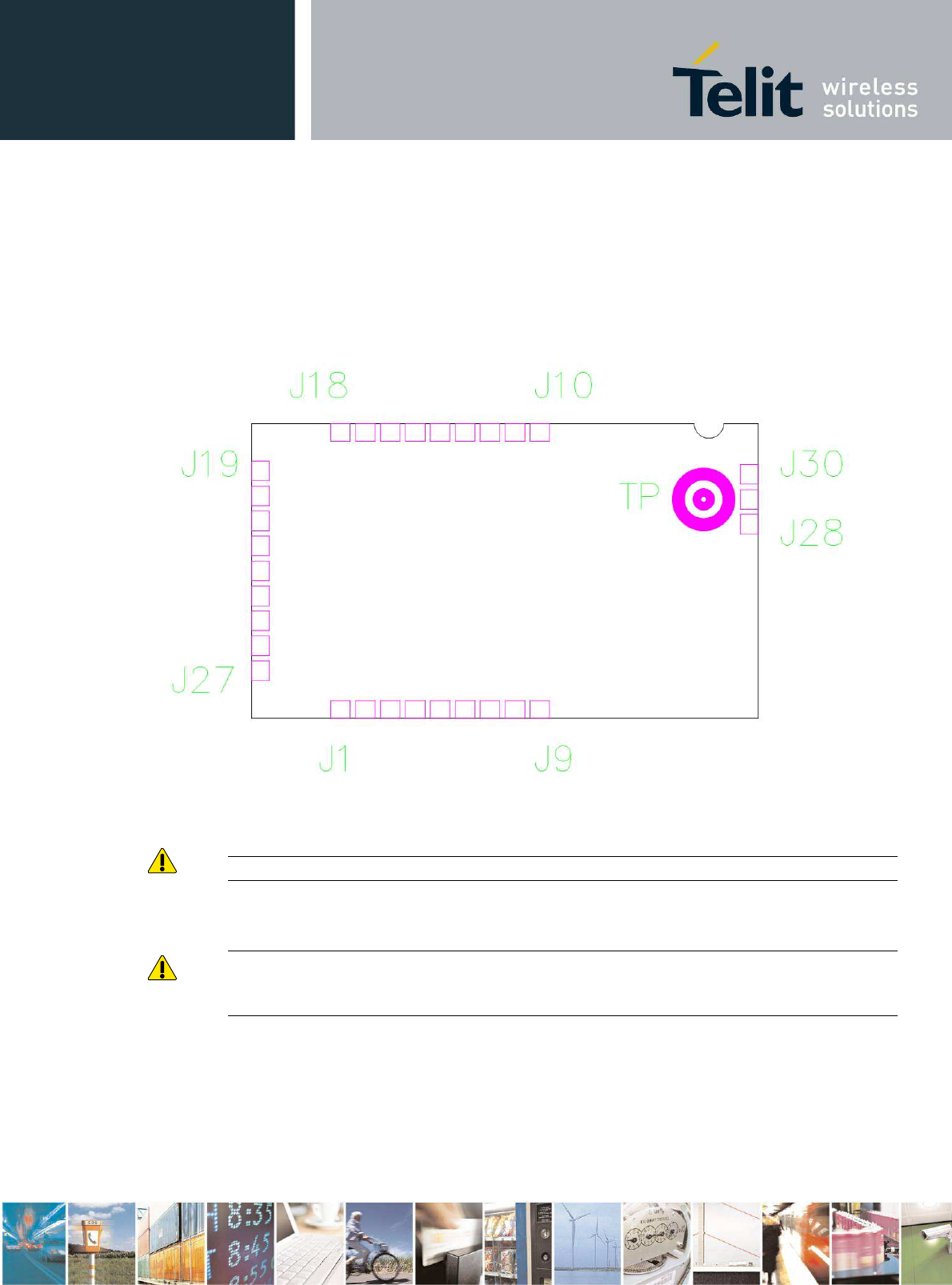
xE70-915 RF Module User Guide
1VV0301106 rev.3 – 2015-03-04
Reproduction forbidden without written authorization from Telit Communications S.p.A. - All Rights
Reserved. Page 17 of 34
4. Pin-out and Signals Description
4.1. Module Pin-out (Top View)
CAUTION: reserved pins must not be connected
CAUTION: In case you want to use in the same application Telit ZE51 or ZE61 modules
J9 and J8 should not be connected, since reserved on these modules (see foot notes on Pin-
Out tables.
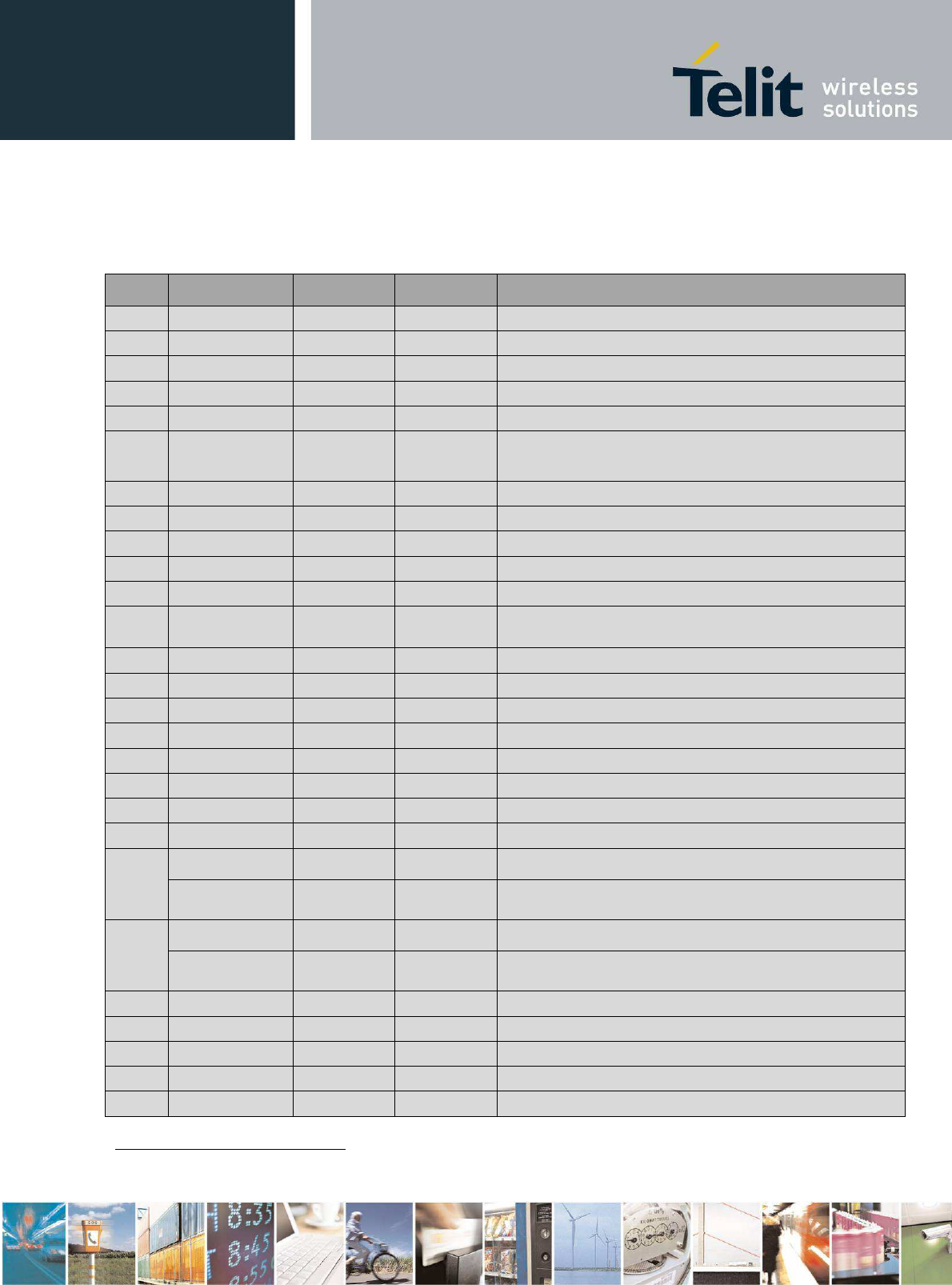
xE70-915 RF Module User Guide
1VV0301106 rev.3 – 2015-03-04
Reproduction forbidden without written authorization from Telit Communications S.p.A. - All Rights
Reserved. Page 18 of 34
4.2. Module Pin-out Table
Pin Pin name Pin type Signal level Function
J30 GND Gnd RF Ground connection for external antenna
J29 Ext_Antenna RF RF I/O connection to external antenna
J28 GND Gnd RF Ground connection for external antenna
J27 GND Gnd Ground
J26 GND Gnd Ground
J25 VDD Power Digital and Radio part power supply pin
J24 CTS I TTL Clear To Send
J23 RESET I TTL µC reset ( Active low with internal pull-up )
J22 RTS O TTL Request To Send
J21 RXD I TTL RxD UART – Serial Data Reception
J20 GND Gnd Ground
J19 TXD O TTL TxD UART – Serial Data Transmission
J18 STAND_BY I TTL Standby (Active high with internal pull-down: when set to 1 the
module is put in stand-by)
J17 GND Gnd Ground
J16 PROG I TTL Signal for serial µC flashing (Active high with internal pull-down)
J15 GND Gnd Ground
J14 PDI_DATA I/O TTL Program and Debug Interface DATA
J13 GND Gnd Ground
J12 GND Gnd Ground
J11 GND Gnd Ground
J10 PDI_CLK I TTL Program and Debug Interface CLOCK
J9 IO9
1
I/O TTL Digital I/O N°9 with interrupt
Status TX/RX O TTL See reference document [2] Frequency Hopping Star Network
Protocol Stack User Guide
J8 IO8_AD_DA
2
I/O analog A to D and D to A I/O N°8 with interrupt (Logic I/O capability)
ACK TX O TTL See reference document [2] Frequency Hopping Star Network
Protocol Stack User Guide
J7 IO7_A I/O analog Analog Input N°7 (Logic I/O capability)
J6 IO6_A I/O analog Analog Input N°6 (Logic I/O capability)
J5 IO5_A I/O analog Analog Input N°5 (Logic I/O capability)
J4 IO4_A I/O analog Analog Input N°4 (Logic I/O capability)
J3 IO3_A I/O analog Analog Input N°3 (Logic I/O capability)
1, 2
In case you want to use in the same application Telit ZE51 or ZE61 modules J9 and J8 should not be connected, since
reserved on these modules.
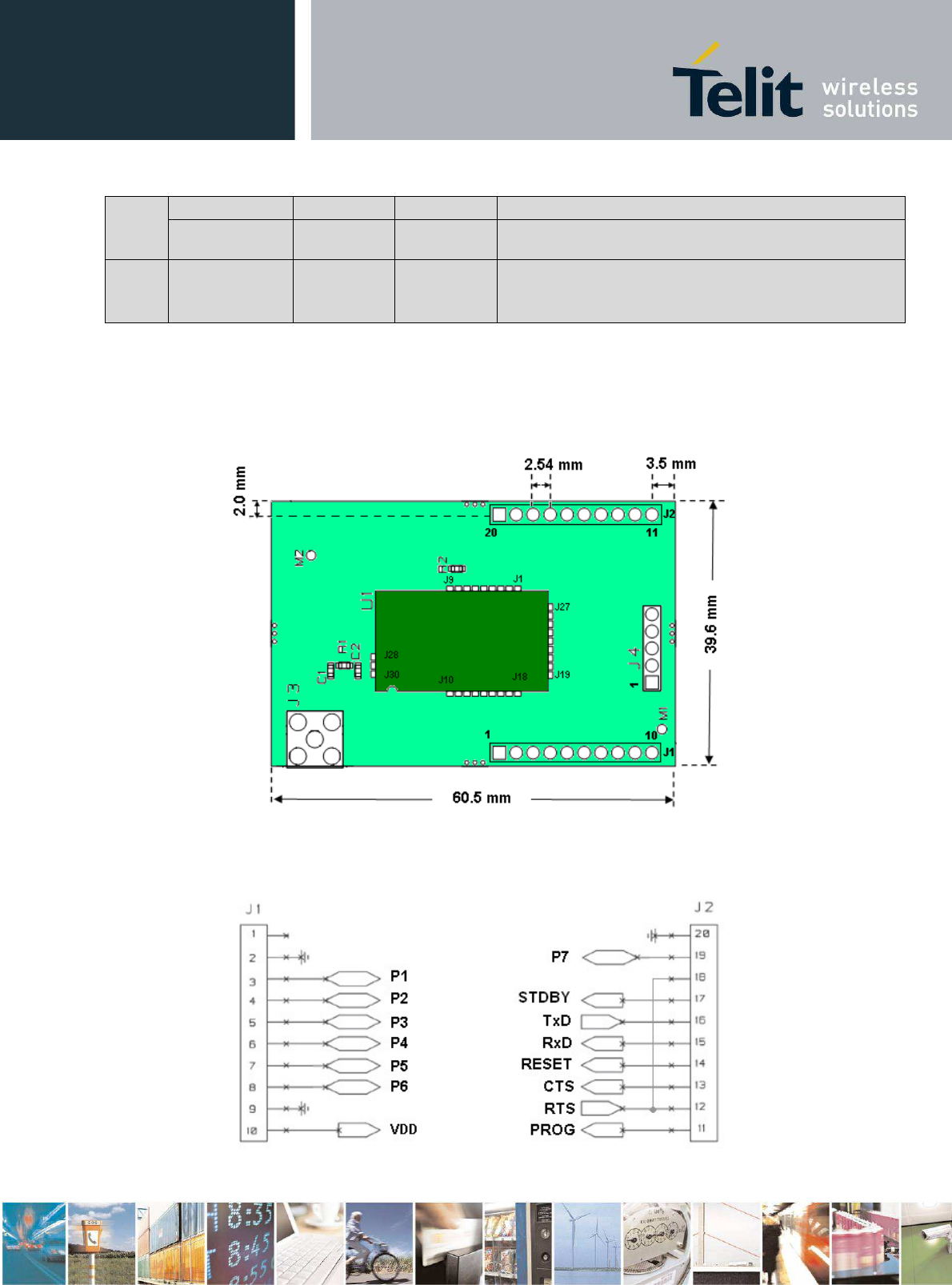
xE70-915 RF Module User Guide
1VV0301106 rev.3 – 2015-03-04
Reproduction forbidden without written authorization from Telit Communications S.p.A. - All Rights
Reserved. Page 19 of 34
J2 IO2_P I/O TTL Logic I/O N°2 with interrupt
RX LED O TTL See reference document [2] Frequency Hopping Star Network
Protocol Stack User Guide
J1 IO1_P I/O TTL Logic I/O N°1 with interrupt
TX LED O TTL See reference document [2] Frequency Hopping Star Network
Protocol Stack User Guide
4.3. Pin-out of the Module DIP
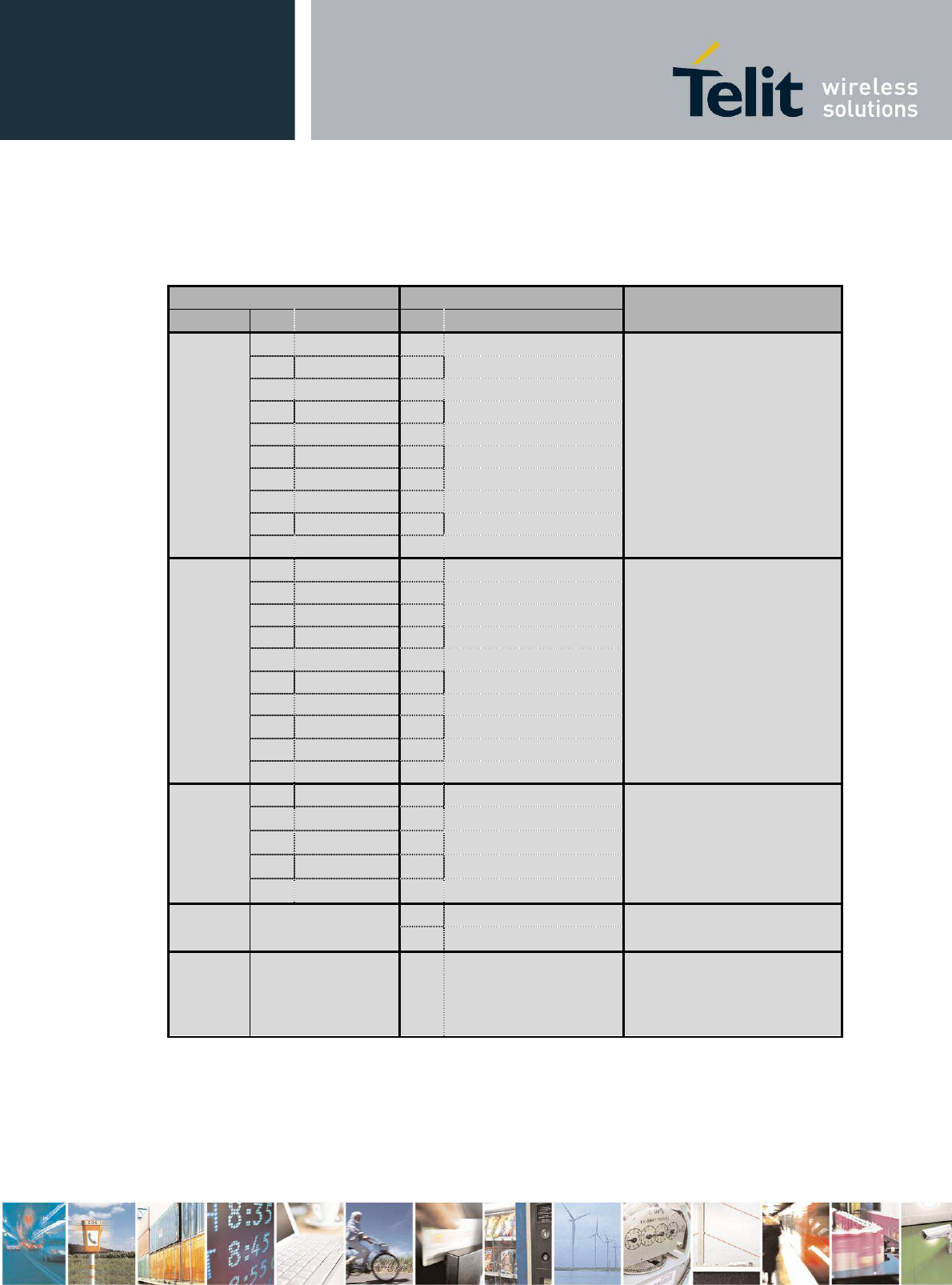
xE70-915 RF Module User Guide
1VV0301106 rev.3 – 2015-03-04
Reproduction forbidden without written authorization from Telit Communications S.p.A. - All Rights
Reserved. Page 20 of 34
4.4. DIP – Module Pin-out Correspondence Table
Pin-Out correspondence between xE70-915/DIP and xE70-915/SMD
xE70-915/DIP xE70-915/SMD Comments
Connector
Pin Name Pin Name
J1
1
2 GND GND
3 P1 J5 IO5_A
4 P2 J9 Status TX/RX Reserved Pin
5 P3 J2 RX LED
6 P4 J1 TX LED
7 P5 J4 IO4_A
8 P6 J3 IO3_A
9 GND GND
10 VDD J25 VDD
J2
11 PROG J16 PROG
12 RTS J22 RTS
13 CTS J24 CTS
14 RESET J23 RESET
15 RxD J21 RxD
16 TxD J19 TxD
17 STDBY J18 STAND_BY
18 RTS J22 RTS
19 P7 J6 IO6_A
20 GND GND
J4
1 J14 PDI_DATA
J4 Connector for debugging and
flashing
2 J10 PDI_CLK
3 J23 RESET
4 J25 VDD
5 GND
J7 IO7_A Reserved Pin
J8 IO8_AD_DA
J3 SMA connector J29 Ext_Antenna
(Unbalanced RF)
A 50 Ohm coplanar wave guide
and a 0 ohm resistor are used to
connect J29 to J3

xE70-915 RF Module User Guide
1VV0301106 rev.3 – 2015-03-04
Reproduction forbidden without written authorization from Telit Communications S.p.A. - All Rights
Reserved. Page 21 of 34
4.5. Signals Description
Signals Description
Reset External hardware reset of the radio module.
Active on low state.
TXD, RXD Serial link signals, format NRZ/TTL:
TXD is for outgoing data. RXD is for incoming data.
The ‘1’ is represented by a high state.
CTS Incoming signal. Indicates whether the module can send serial data to
user (Active, on low state) or not (inactive, on high state).
RTS Outgoing signal. Indicates whether the user can transmit serial data
(active, on low state) or not (inactive, on high state).
IO I/O, configurable as input or as output.
See reference document [2] for LE70-915.
STANDBY Input signal which indicates to the module to switch to pre-selected low-
power mode. See reference document [2] for LE70-915
TX LED Output signal set to VCC during radio transmission and set to GND the
rest of the time
RX LED Output signal set to VCC as soon as a radio frame is detected with correct
synchronization word. The signal returns to GND as soon as the frame
reception is finished
ACK TX
In Addressed Secured mode, this signal rises to VCC when an ACK
hasn’t been received after frame transmission and repetition. This is the
hardware version of “ERROR” serial message. It stays at VCC until next
success addressed secured transmission
STATUS TX/RX Output signal which indicates the status of the serial port. When serial
port is transmitting, Status RX/TX signal goes VCC until the end of serial
transmission. The signal stays to GND the rest of the time
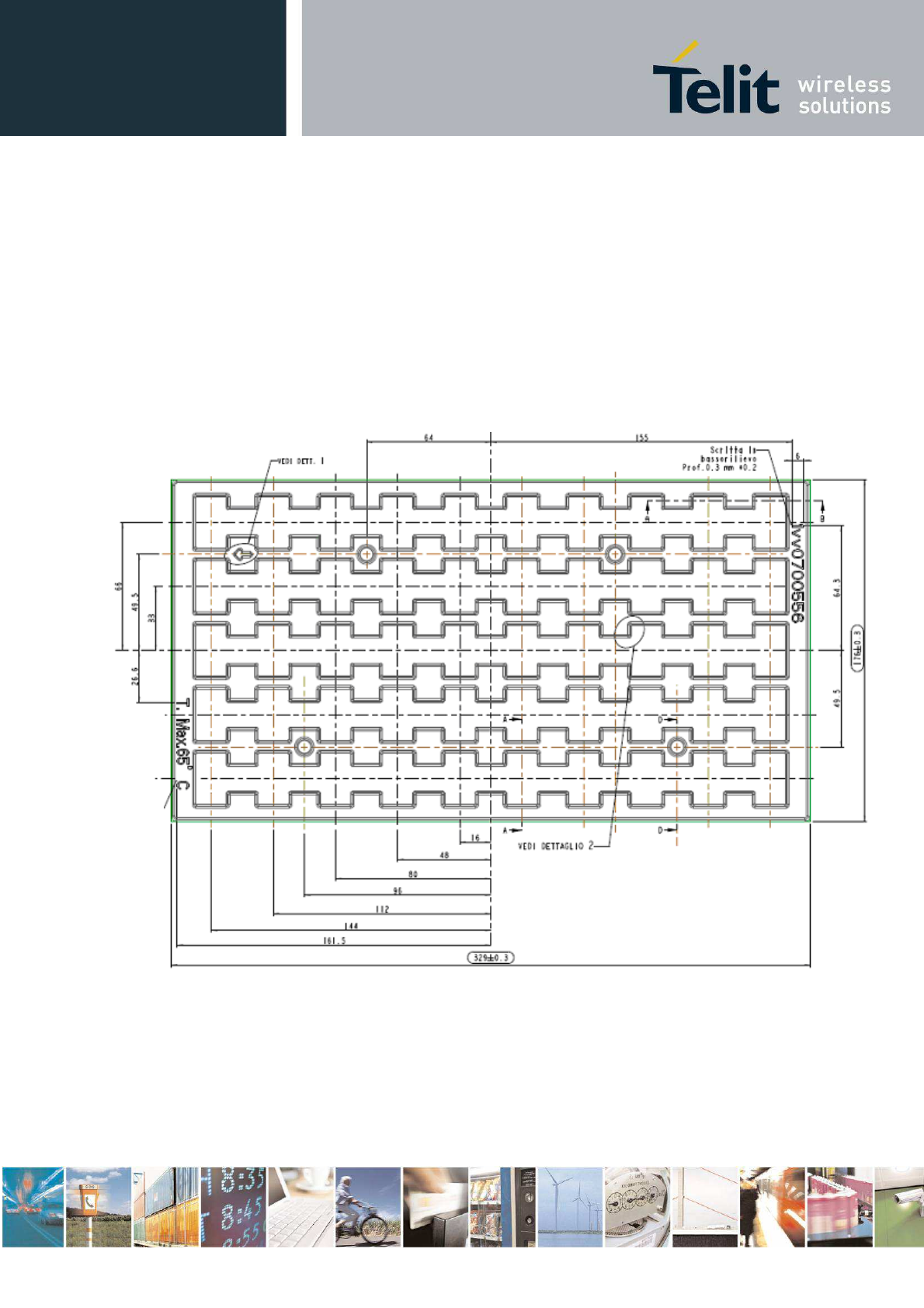
xE70-915 RF Module User Guide
1VV0301106 rev.3 – 2015-03-04
Reproduction forbidden without written authorization from Telit Communications S.p.A. - All Rights
Reserved. Page 22 of 34
5. Process Information
5.1. Delivery
xE70-915 modules are delivered in plastic tray packaging, each tray including 50 units. The
dimensions of the tray are the following: 329 mm x 176 mm x 5.6 mm. Each unit is placed in
a 26.6 mm x 16 mm location. An empty tray weights 45 g and a loaded tray weights around
130 g.
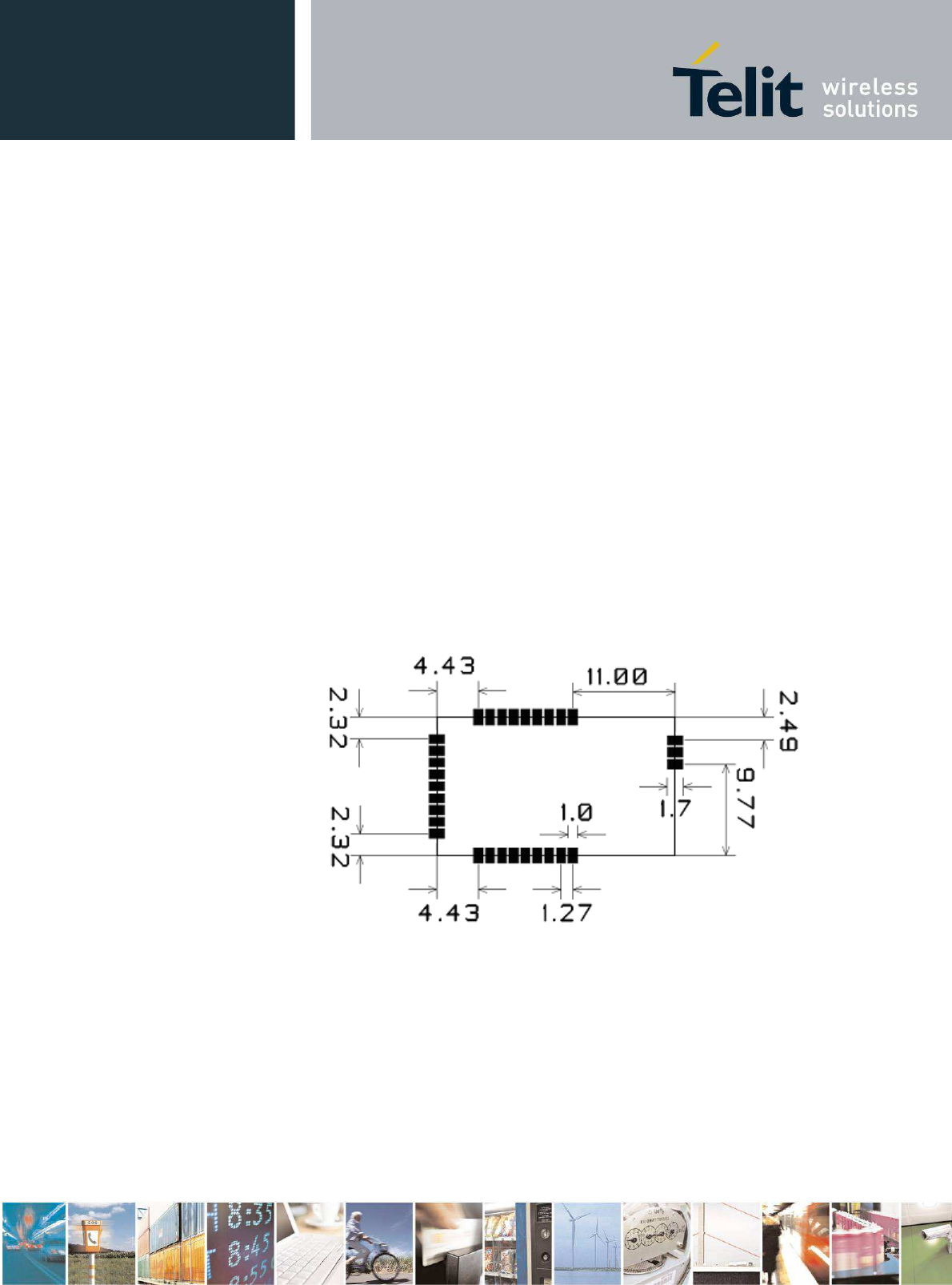
xE70-915 RF Module User Guide
1VV0301106 rev.3 – 2015-03-04
Reproduction forbidden without written authorization from Telit Communications S.p.A. - All Rights
Reserved. Page 23 of 34
5.2. Storage
The optimal storage environment for xE70-915 modules should be dust free, dry and the
temperature should be included between -40°C and +85°C.
In case of a reflow soldering process, radio modules must be submitted to a drying bake at
+125°C during 24 hours. The drying bake must be used prior to the reflow soldering process
in order to prevent a popcorn effect. After being submitted to the drying bake, modules must
be soldered on host boards within 168 hours.
Also, it must be noted that due to some components, xE70-915 modules are ESD sensitive
device. Therefore, ESD handling precautions should be carefully observed.
5.3. Soldering pad pattern
The surface finished on the printed circuit board pads should be made of Nickel/Gold surface.
The recommended soldering pad layout on the host board for the xE70-915 module is shown
in the diagram below:
All dimensions in mm
Neither via-holes nor wires are allowed on the PCB upper layer in area occupied by the
module.
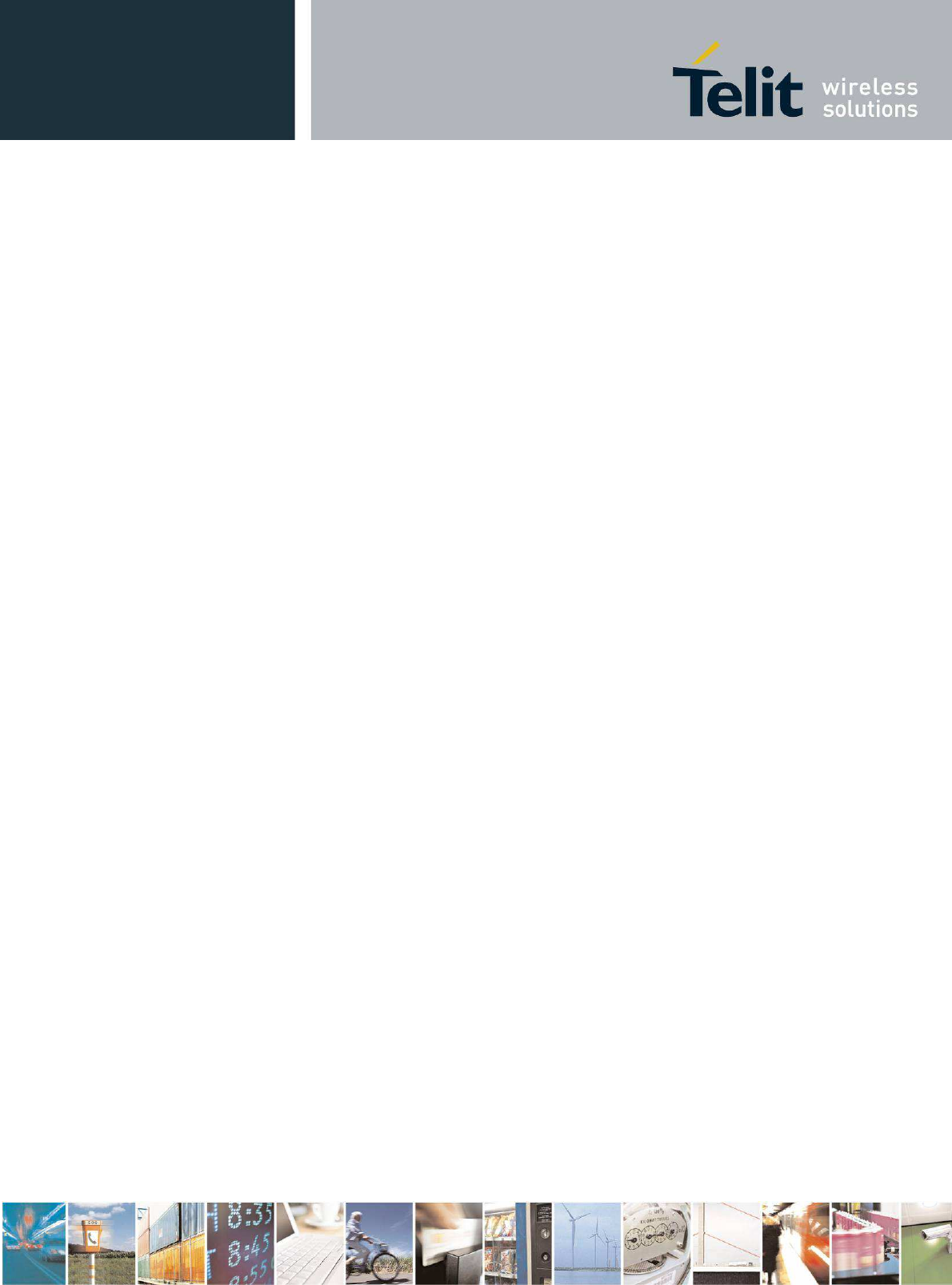
xE70-915 RF Module User Guide
1VV0301106 rev.3 – 2015-03-04
Reproduction forbidden without written authorization from Telit Communications S.p.A. - All Rights
Reserved. Page 24 of 34
5.4. Solder paste
xE70-915 module is designed for reflow soldering process. For proper module assembly,
solder paste must be printed on the target surface of the host board. The solder paste should be
eutectic and made of 95.5% of SN, 4% of Ag and 0.5% of Cu. The recommended solder paste
height is 180 µm.
5.5. Placement
The xE70-915 module can be automatically placed on host boards by pick-and-place
machines like any integrated circuit
5.6. Soldering Profile (RoHS Process)
It must be noted that xE70-915 module should not be allowed to be hanging upside down
during the reflow operation. This means that the module has to be assembled on the side of
the printed circuit board that is soldered last.
The recommendation for lead-free solder reflow in IPC/JEDEC J-STD-020D Standard should
be followed.
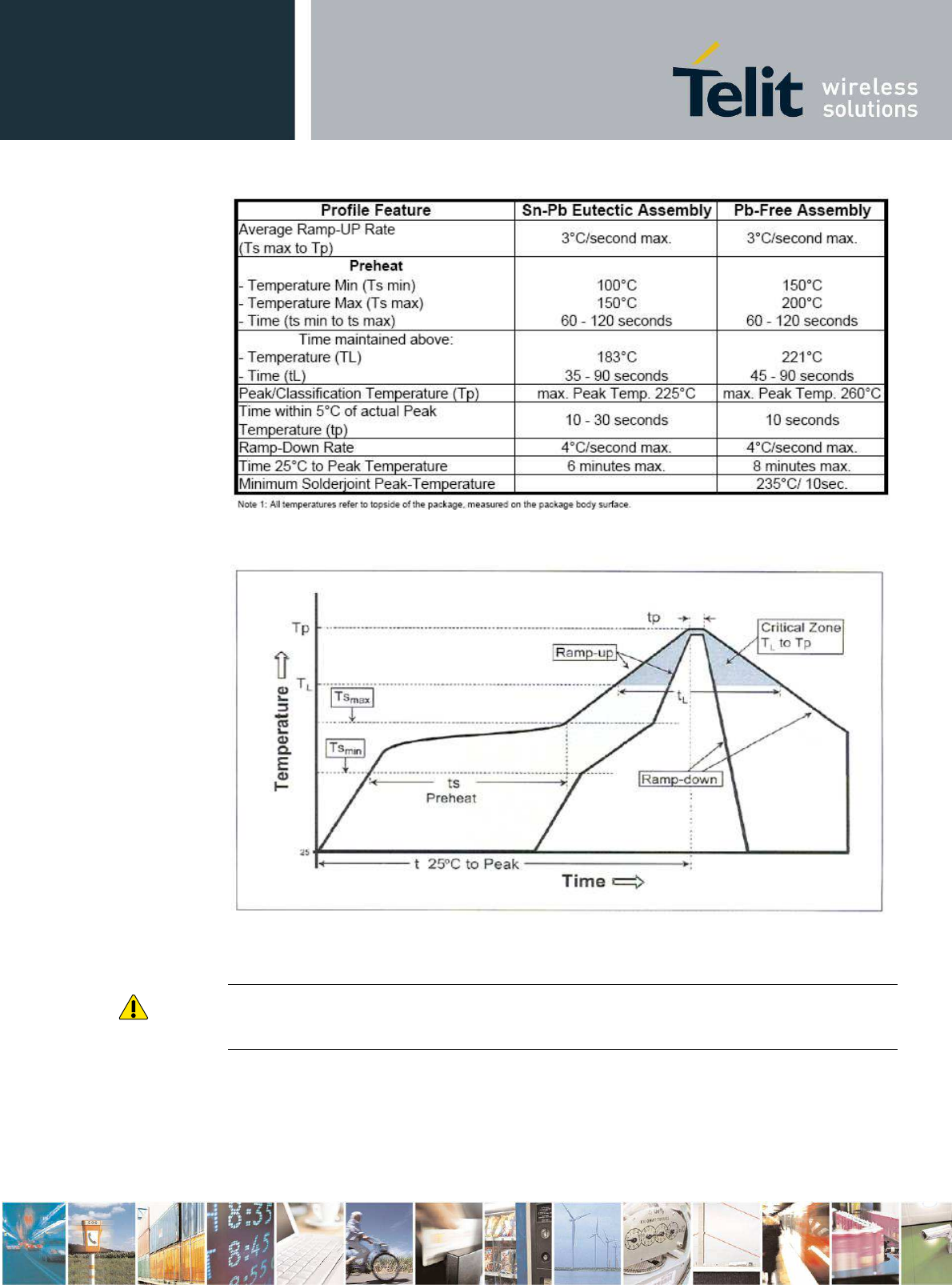
xE70-915 RF Module User Guide
1VV0301106 rev.3 – 2015-03-04
Reproduction forbidden without written authorization from Telit Communications S.p.A. - All Rights
Reserved. Page 25 of 34
The barcode label located on the module shield is able to withstand the reflow temperature.
CAUTION - It must also be noted that if the host board is submitted to a wave soldering
after the reflow operation, a solder mask must be used in order to protect the xE70-915
radio module’s metal shield from being in contact with the solder wave.
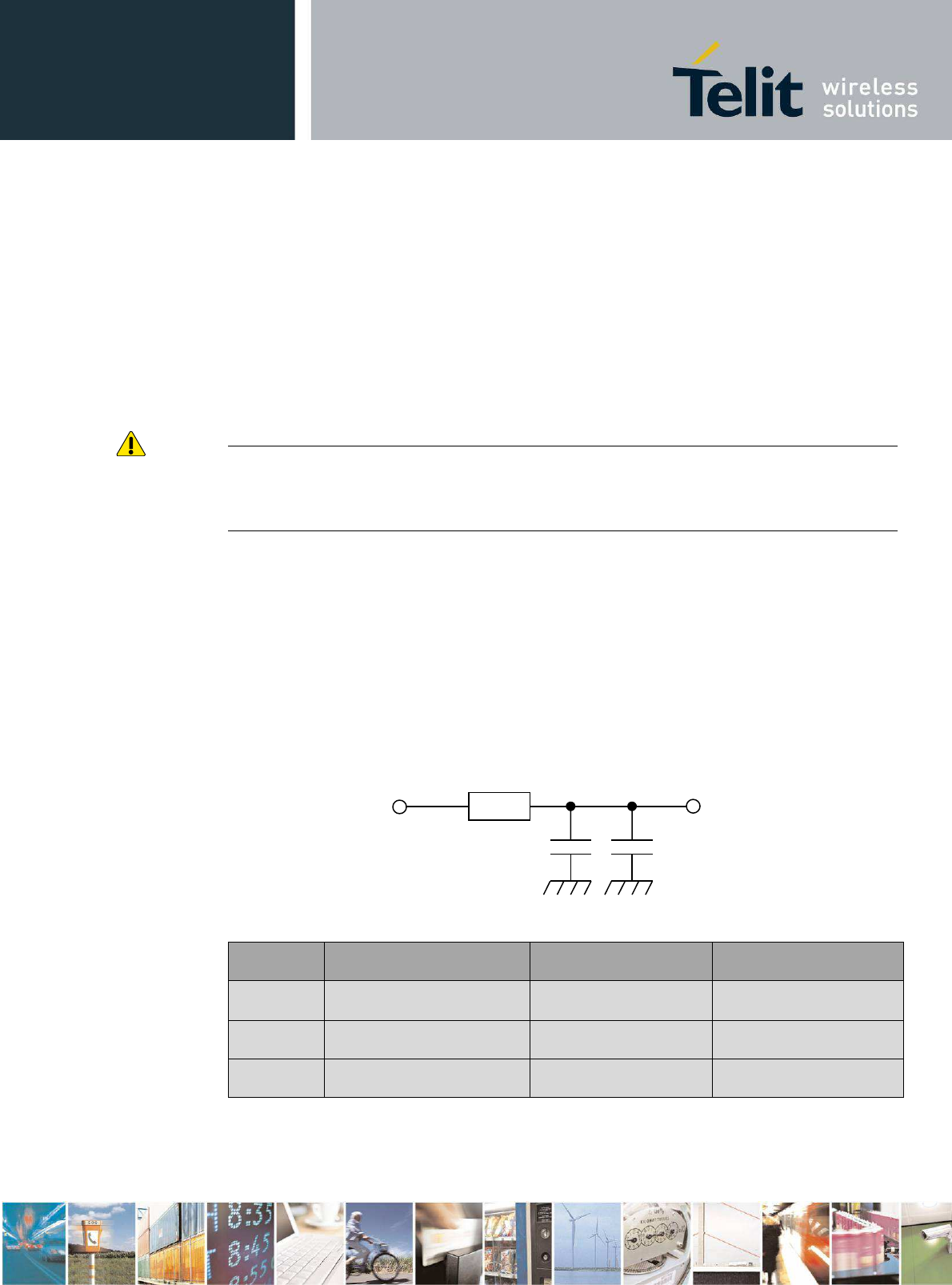
xE70-915 RF Module User Guide
1VV0301106 rev.3 – 2015-03-04
Reproduction forbidden without written authorization from Telit Communications S.p.A. - All Rights
Reserved. Page 26 of 34
6. Board Mounting Recommendation
6.1. Electrical environment
The best performances of the xE70-915 module are obtained in a “noise free” environment.
Some basic recommendations must be followed:
• Noisy electronic components (serial RS232, DC-DC Converter, Display, Ram, bus,...)
must be placed as far as possible from the xE70-915 module.
CAUTION – A particular attention must be put on power supply DC-DC converter, due to
switching frequency that generates spurious into the receiver band. It can strongly decrease
module performances. Therefore it is recommended to put a metallic shield covering DC
conversion function.
• Switching components circuits (especially RS-232/TTL interface circuit power
supply) must be decoupled with a 100 µF low ESR tantalum capacitor. The
decoupling capacitor must be placed as close as possible to the noisy chip.
6.2. Power supply decoupling on xE70-915 module
The power supply of xE70-915 module must be nearby decoupled. A LC filter is strongly
recommended in case of DC-DC conversion. It must be placed as close as possible to the
radio module power supply pin, VDD.
For example:
Symbols Reference Value Manufacturer
L1 LQH32CN1R0M33
1µH Murata
C1 GRM31CF51A226ZE01 22µF Murata
C2 Ceramic CMS 25V 100nF Multiple
L1 must be chosen carefully with very low serial resistance (ESR) in order to limit voltage drop.
V
dd
C1 C2
Power Supply
L1
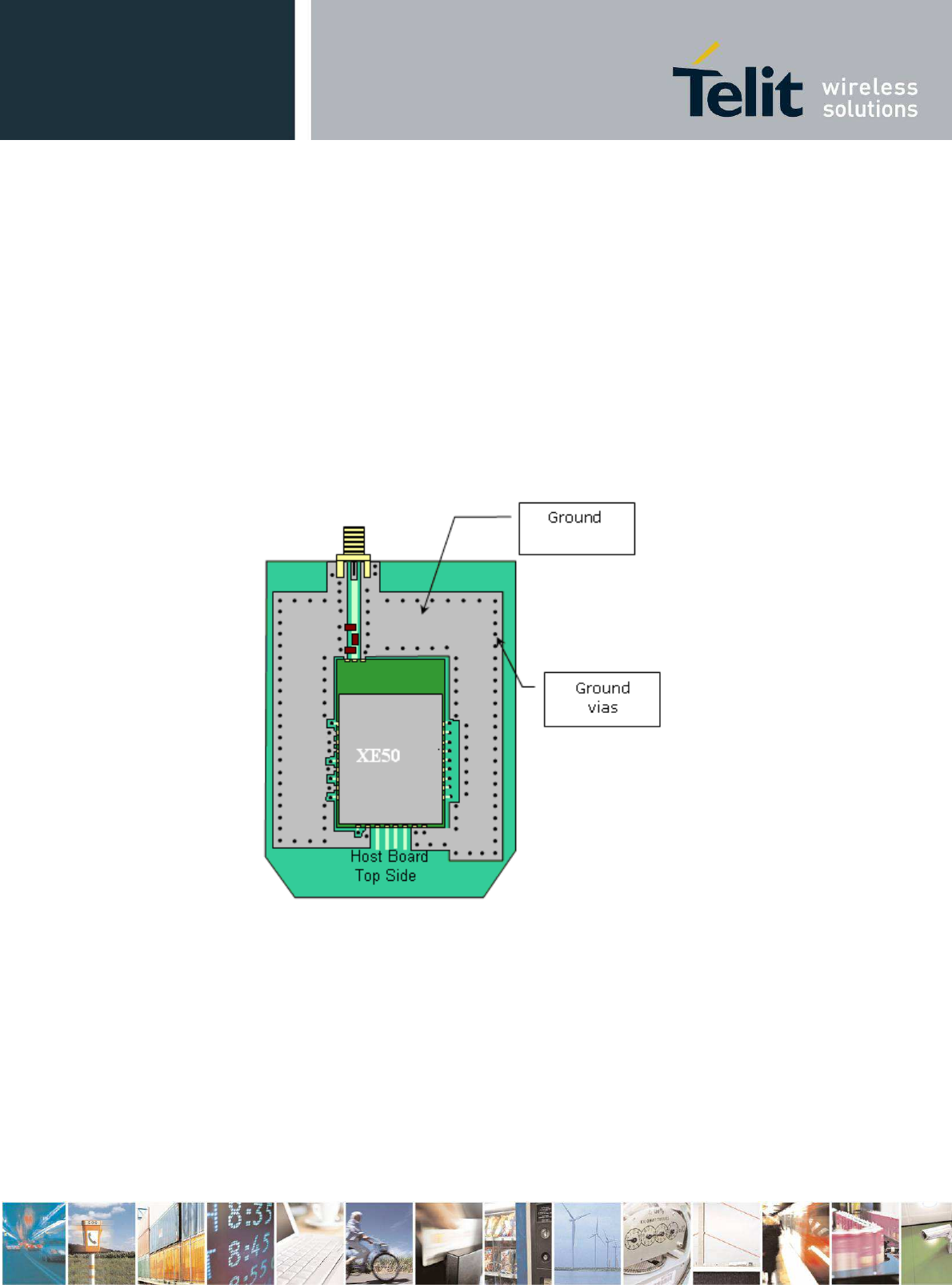
xE70-915 RF Module User Guide
1VV0301106 rev.3 – 2015-03-04
Reproduction forbidden without written authorization from Telit Communications S.p.A. - All Rights
Reserved. Page 27 of 34
6.3. RF layout considerations
Basic recommendations must be followed to achieve a good RF layout:
• It is recommended to fill all unused PCB area around the module with ground plane
• The radio module ground pin must be connected to solid ground plane.
• If the ground plane is on the bottom side, a via (metal hole) must be used in front of
each ground pad. Especially J28 and J30 (RF Gnd) pins should be grounded via
several holes to be located right next to the pins, thus minimizing inductance and
preventing mismatch and losses.
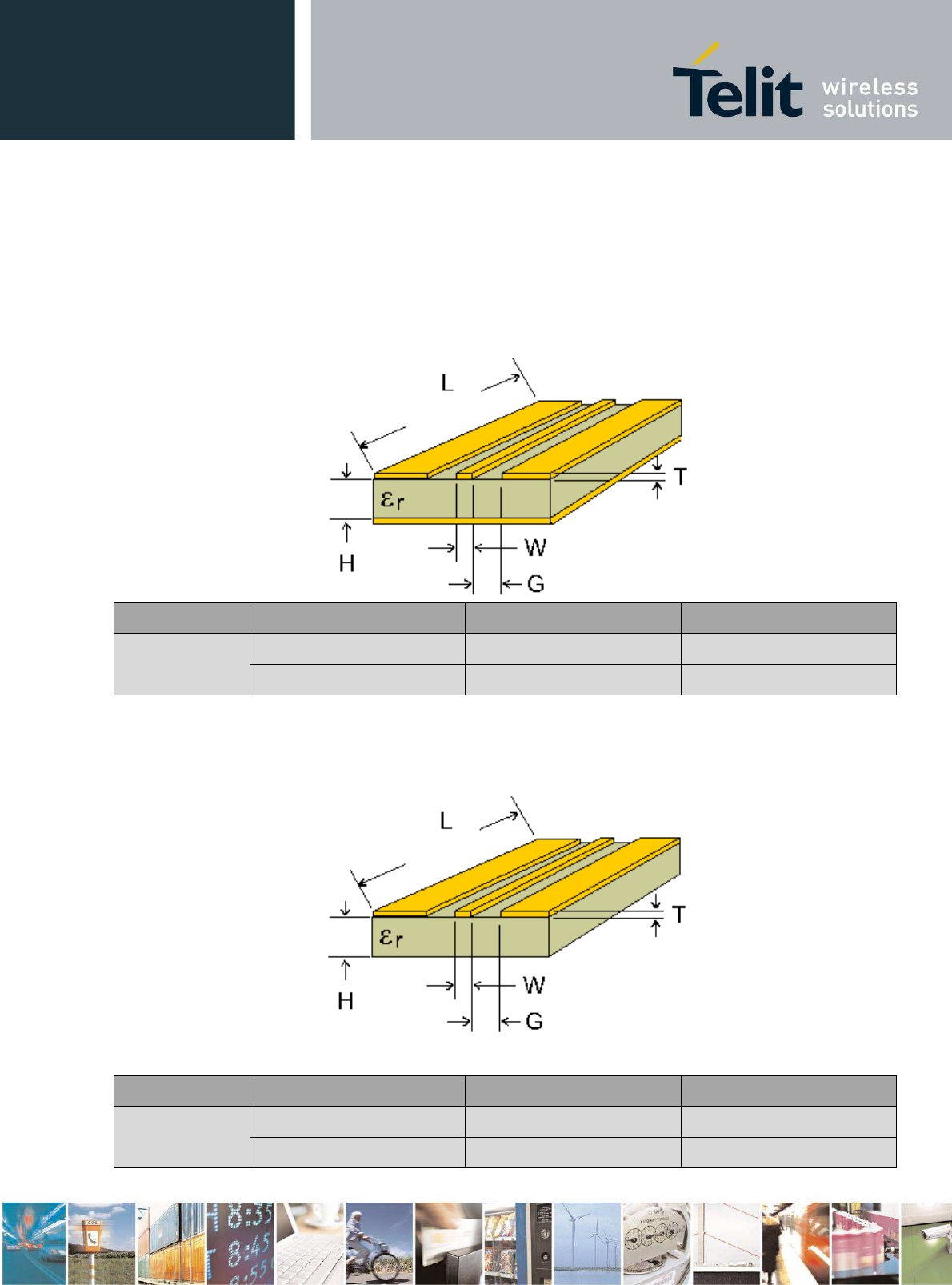
xE70-915 RF Module User Guide
1VV0301106 rev.3 – 2015-03-04
Reproduction forbidden without written authorization from Telit Communications S.p.A. - All Rights
Reserved. Page 28 of 34
6.4. Antenna connections on printed circuit
boards
Special care must be taken when connecting an antenna or a connector to the module. The RF
output impedance is 50 ohms, so the strip between the pad and the antenna or connector must
be 50 ohms following the tables below. Ground lines should be connected to the ground plane
with as many vias as possible, but not too close to the signal line.
PCB material PCB thickness H (mm) Coplanar line W (mm) Coplanar line G (mm)
FR4 0.8 1 0.3
1.6 1 0.2
Table 1: Values for double face PCB with ground plane around and under coplanar wave guide
(recommended)
PCB material PCB thickness H (mm) Coplanar line W (mm) Coplanar line G (mm)
FR4 0.8 1 0.22
1.6 1 0.23
Table 2: Values for simple face PCB with ground plane around coplanar wave guide (not recommended)
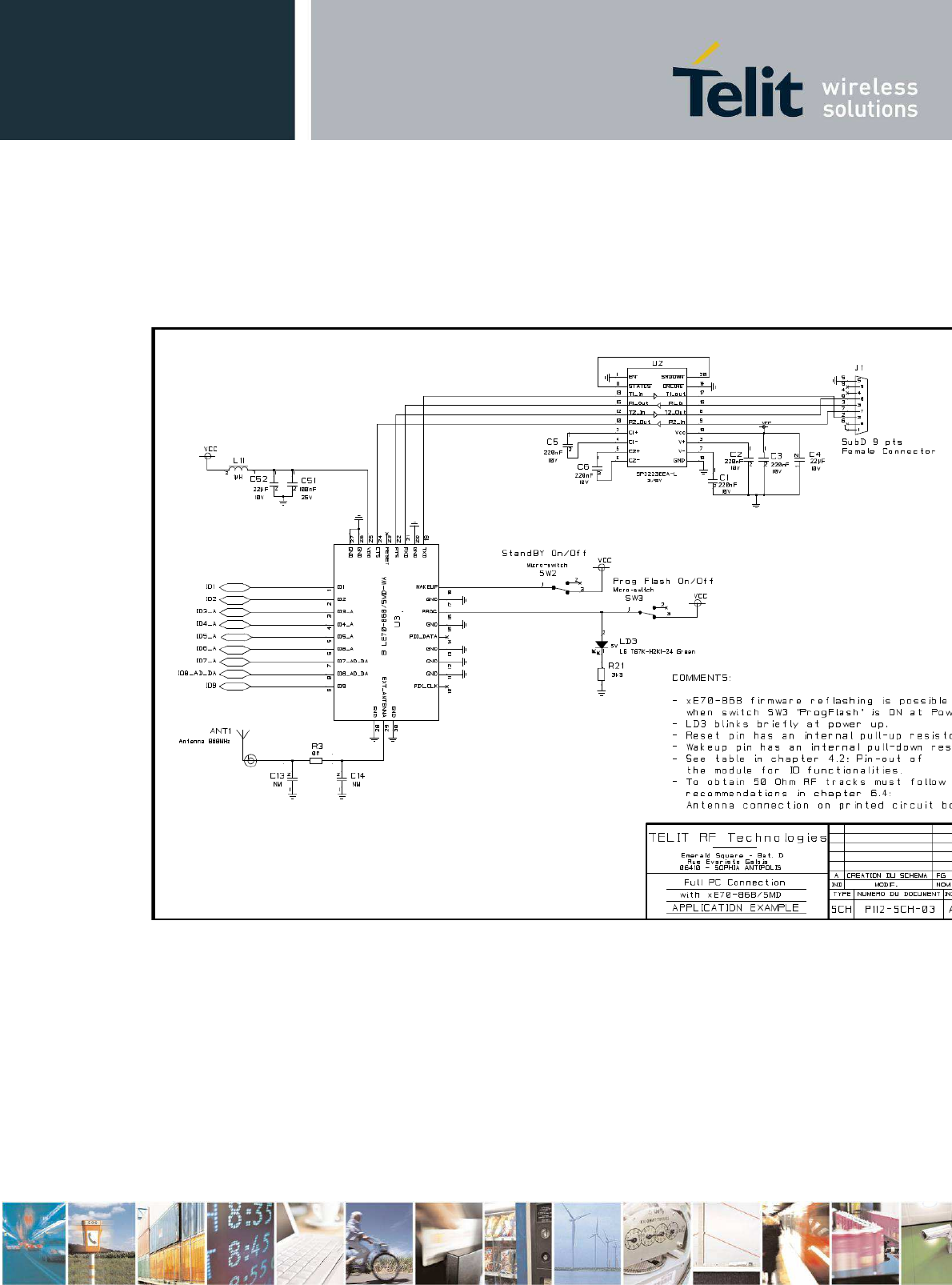
xE70-915 RF Module User Guide
1VV0301106 rev.3 – 2015-03-04
Reproduction forbidden without written authorization from Telit Communications S.p.A. - All Rights
Reserved. Page 29 of 34
6.5. xE70-868/915 Interfacing
Example of a full RS-232 connection between a PC or an Automat (PLC) and xE70-868/915
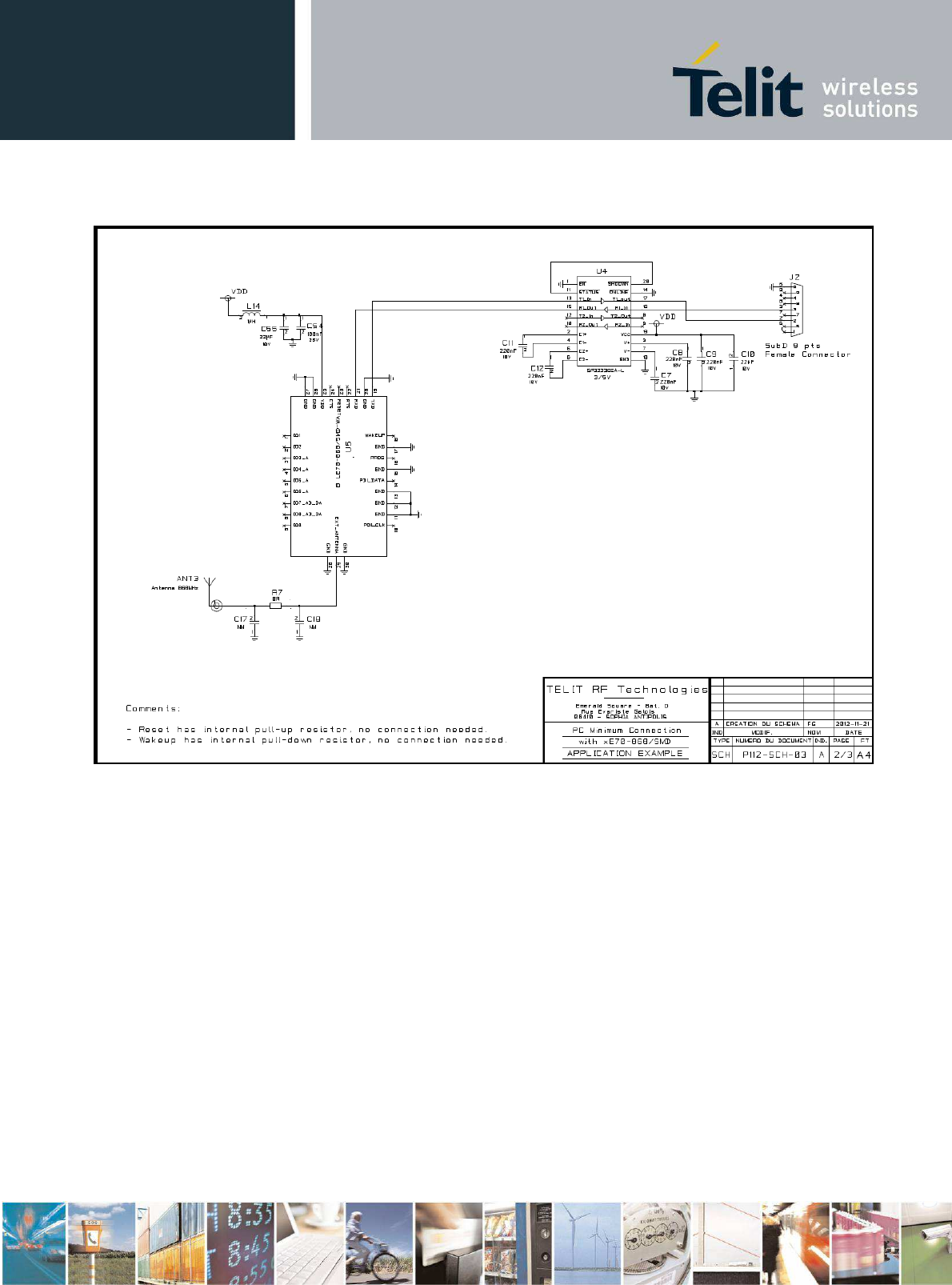
xE70-915 RF Module User Guide
1VV0301106 rev.3 – 2015-03-04
Reproduction forbidden without written authorization from Telit Communications S.p.A. - All Rights
Reserved. Page 30 of 34
Example of minimum connections for communication between a PC and xE70-868/915
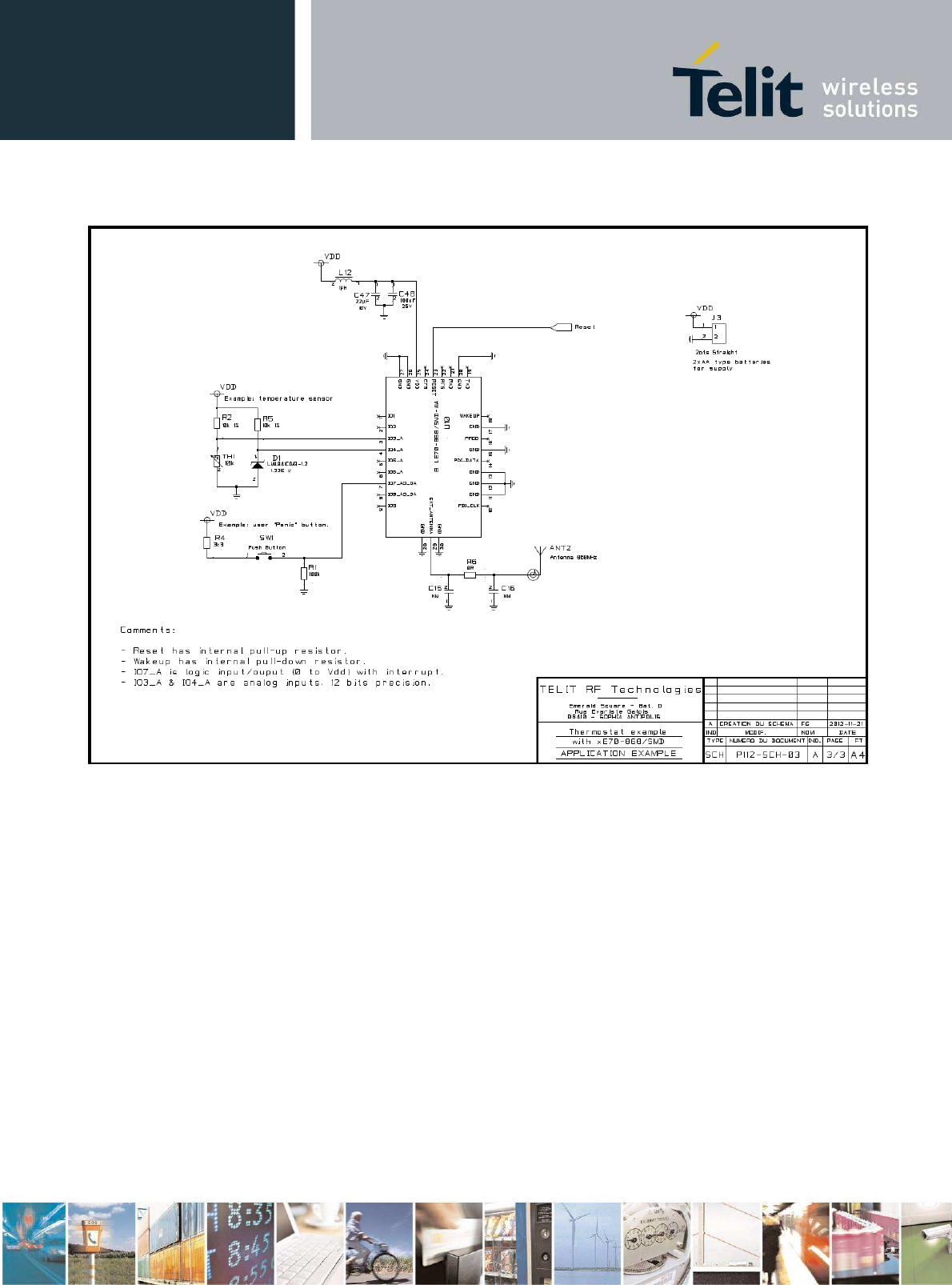
xE70-915 RF Module User Guide
1VV0301106 rev.3 – 2015-03-04
Reproduction forbidden without written authorization from Telit Communications S.p.A. - All Rights
Reserved. Page 31 of 34
Example for sensor connection with xE70-868/915
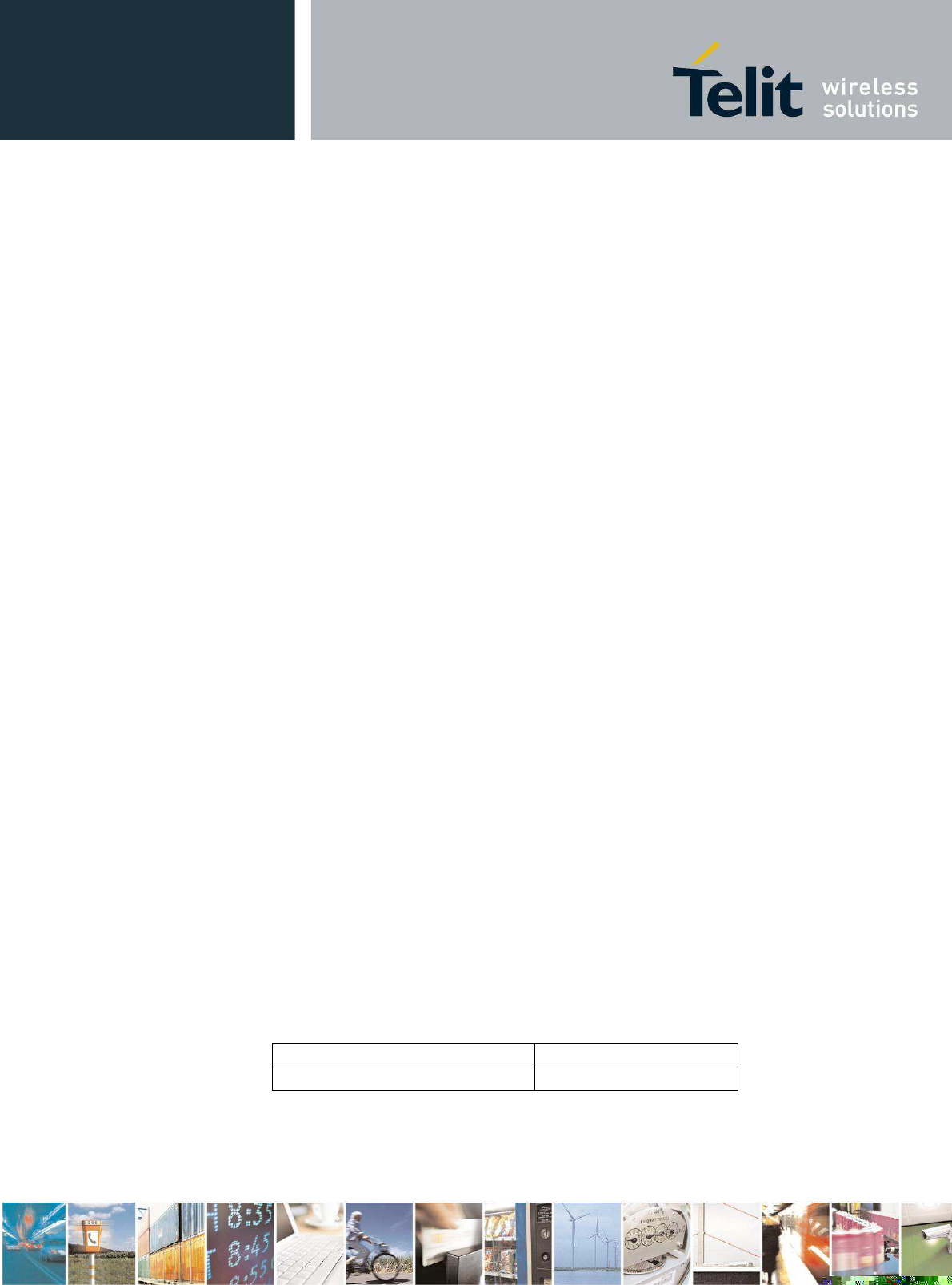
xE70-915 RF Module User Guide
1VV0301106 rev.4 – 2015-06-16
Reproduction forbidden without written authorization from Telit Communications S.p.A. - All Rights
Reserved. Page 45 of 50
7. Conformity assessment issues
FCC/IC Regulatory notices
7.1. Modification statement
Telit has not approved any changes or modifications to this device by the user. Any changes
or modifications could void the user’s authority to operate the equipment.
Telit n’approuve aucune modification apportée à l’appareil par l’utilisateur, quelle qu’en soit
la nature. Tout changement ou modification peuvent annuler le droit d’utilisation de
l’appareil par l’utilisateur.
7.2. Interference statement
This device complies with Part 15 of the FCC Rules and Industry Canada license-exempt RSS
standard(s). Operation is subject to the following two conditions: (1) this device may not
cause interference, and (2) this device must accept any interference, including interference
that may cause undesired operation of the device.
Le présent appareil est conforme aux CNR d'Industrie Canada applicables aux appareils
radio exempts de licence. L'exploitation est autorisée aux deux conditions suivantes: (1)
l'appareil ne doit pas produire de brouillage, et (2) l'utilisateur de l'appareil doit accepter
tout brouillage radioélectrique subi, même si le brouillage est susceptible d'en compromettre
le fonctionnement.
7.3. Wireless notice
This equipment complies with FCC and IC radiation exposure limits set forth for an
uncontrolled environment. The antenna should be installed and operated with minimum
distance of 20 cm between the radiator and your body. Antenna gain and type must be:
Type Max Gain
λ/2 dipole antenna
1.9 dBi
This transmitter must not be co-located or operating in conjunction with any other antenna or
transmitter.
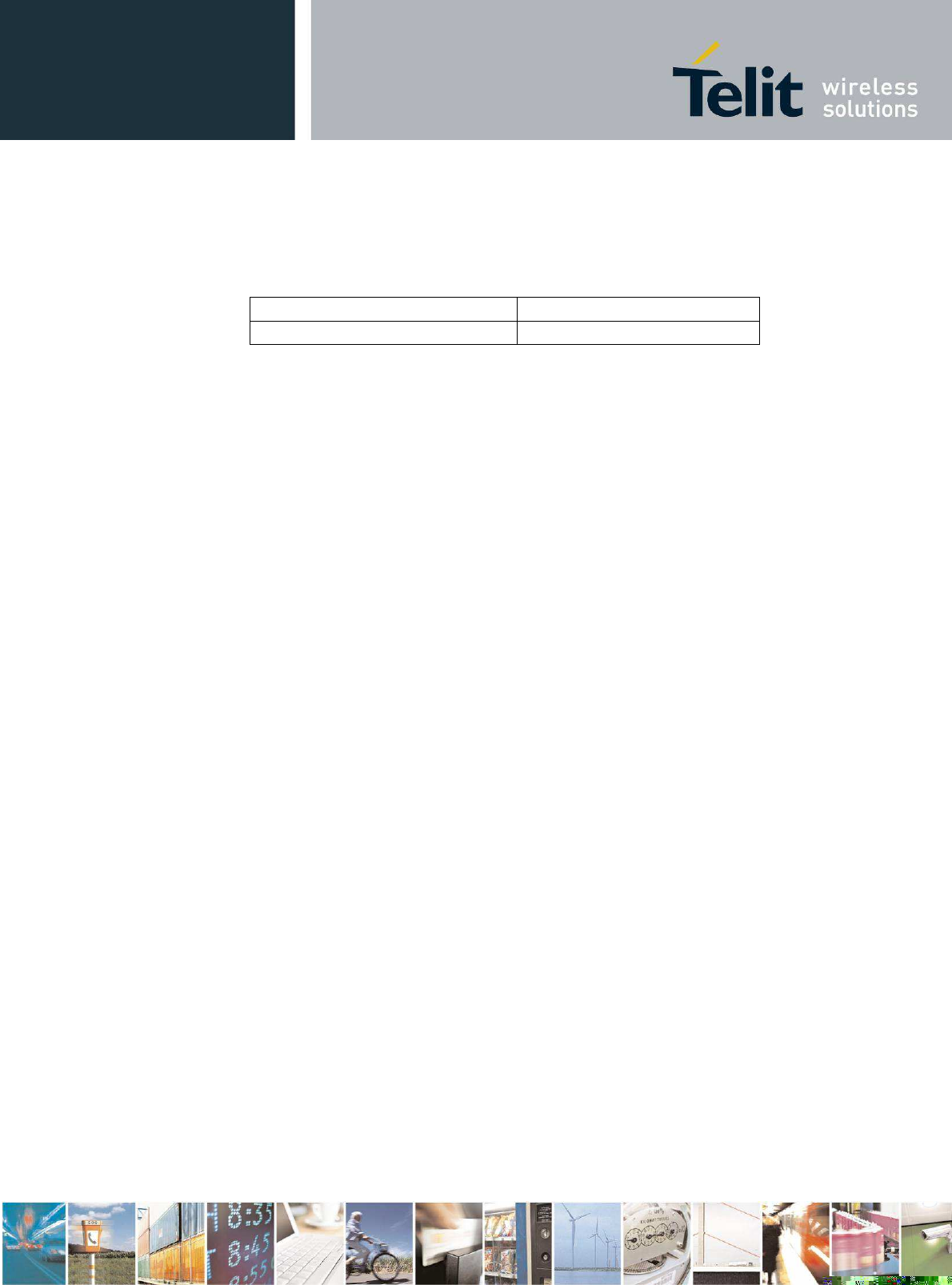
xE70-915 RF Module User Guide
1VV0301106 rev.4 – 2015-06-16
Reproduction forbidden without written authorization from Telit Communications S.p.A. - All Rights
Reserved. Page 46 of 50
Cet appareil est conforme aux limites d'exposition aux rayonnements de l’IC pour un
environnement non contrôlé. L'antenne doit être installée de façon à garder une distance
minimale de 20 centimètres entre la source de rayonnements et votre corps. Gain et Type de
l'antenne doit être ci-dessous:
Type Gain maximum
Antenne dipole λ/2
1.9 dBi
L'émetteur ne doit pas être colocalisé ni fonctionner conjointement avec à autre antenne ou
autre émetteur.
7.4. FCC Class B digital device notice
This equipment has been tested and found to comply with the limits for a Class B digital
device, pursuant to part 15 of the FCC Rules. These limits are designed to provide reasonable
protection against harmful interference in a residential installation. This equipment generates,
uses and can radiate radio frequency energy and, if not installed and used in accordance with
the instructions, may cause harmful interference to radio communications. However, there is
no guarantee that interference will not occur in a particular installation. If this equipment does
cause harmful interference to radio or television reception, which can be determined by
turning the equipment off and on, the user is encouraged to try to correct the interference by
one or more of the following measures:
Reorient or relocate the receiving antenna.
Increase the separation between the equipment and receiver.
Connect the equipment into an outlet on a circuit different from that to which the receiver is
connected.
Consult the dealer or an experienced radio/TV technician for help.
7.5. Labelling Requirements for the Host device
The host device shall be properly labelled to identify the modules within the host device. The
certification label of the module shall be clearly visible at all times when installed in the host
device, otherwise the host device must be labelled to display the FCC ID and IC of the
module, preceded by the words "Contains transmitter module", or the word "Contains", or
similar wording expressing the same meaning, as follows:
Contains FCC ID: RI7LE70FH
Contains IC: 5131A-LE70FH
L'appareil hôte doit être étiqueté comme il faut pour permettre l'identification des modules
qui s'y trouvent. L'étiquette de certification du module donné doit être posée sur l'appareil
hôte à un endroit bien en vue en tout temps. En l'absence d'étiquette, l'appareil hôte doit
porter une étiquette donnant le FCC ID et le IC du module, précédé des mots « Contient un
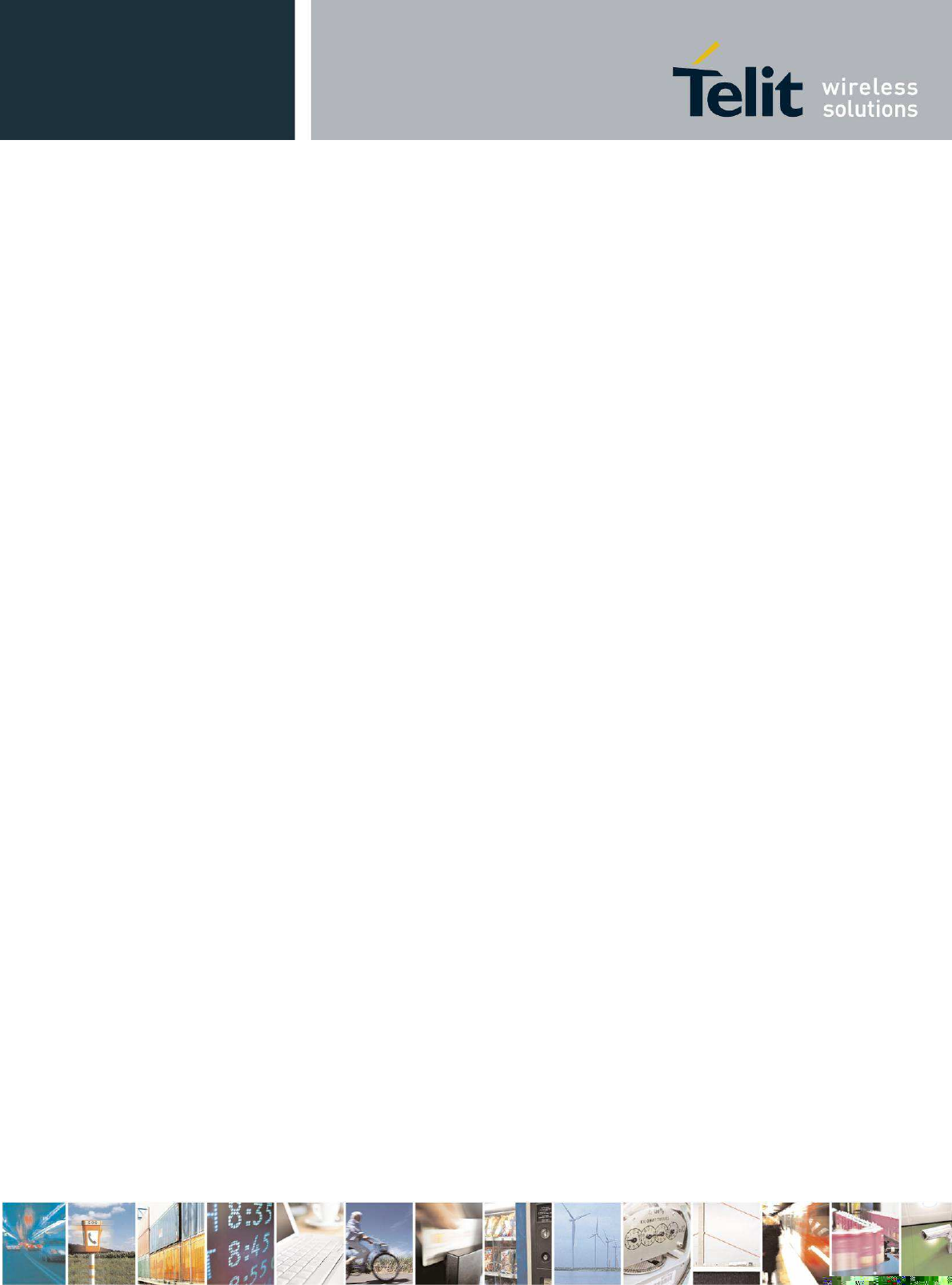
xE70-915 RF Module User Guide
1VV0301106 rev.4 – 2015-06-16
Reproduction forbidden without written authorization from Telit Communications S.p.A. - All Rights
Reserved. Page 47 of 50
module d'émission », du mot « Contient » ou d'une formulation similaire exprimant le même
sens, comme suit :
Contains FCC ID: RI7LE70FH
Contains IC: 5131A-LE70FH
7.6. CAN ICES-3 (B) / NMB-3 (B)
This Class B digital apparatus complies with Canadian ICES-003.
Cet appareil numérique de classe B est conforme à la norme canadienne ICES-003.
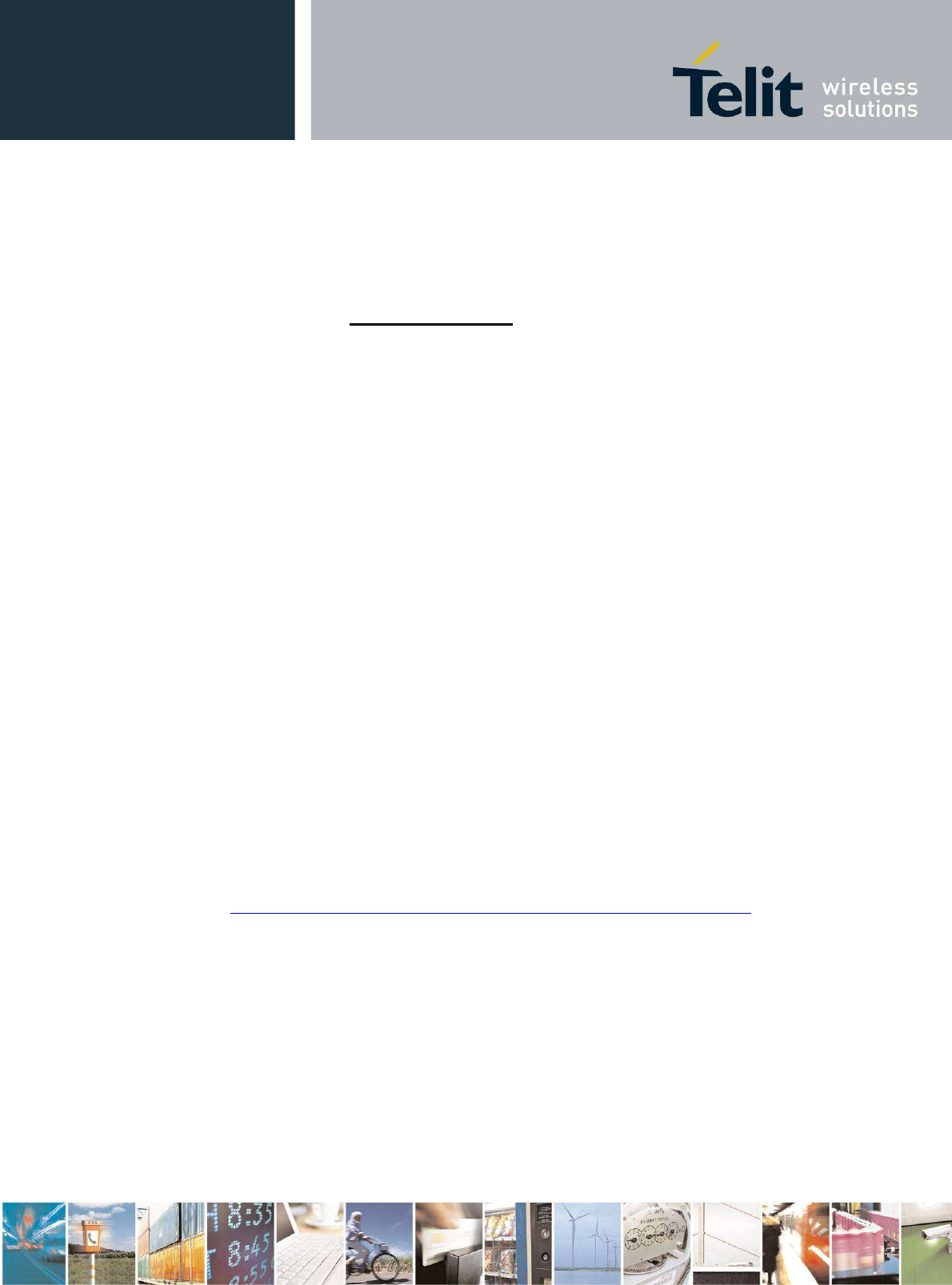
xE70-915 RF Module User Guide
1VV0301106 rev.3 – 2015-03-04
Reproduction forbidden without written authorization from Telit Communications S.p.A. - All Rights
Reserved. Page 32 of 34
8.
Safety Recommendations
READ CAREFULLY
Be sure the use of this product is allowed in the country and in the environment required. The
use of this product may be dangerous and has to be avoided in the following areas:
•Where it can interfere with other electronic devices in environments such as hospitals,
airports, aircrafts, etc.
•Where there is risk of explosion such as gasoline stations, oil refineries, etc. It is
responsibility of the user to enforce the country regulation and the specific
environment regulation.
Do not disassemble the product; any mark of tampering will compromise the warranty
validity. We recommend following the instructions of the hardware user guides for a correct
wiring of the product. The product has to be supplied with a stabilized voltage source and the
wiring has to be conforming to the security and fire prevention regulations. The product has to
be handled with care, avoiding any contact with the pins because electrostatic discharges may
damage the product itself.
The system integrator is responsible of the functioning of the final product; therefore, care has
to be taken to the external components of the module, as well as of any project or installation
issue, because the risk of disturbing the GSM network or external devices or having impact
on the security. Should there be any doubt, please refer to the technical documentation and the
regulations in force. Every module has to be equipped with a proper antenna with specific
characteristics. The antenna has to be installed with care in order to avoid any interference
with other electronic devices and has to guarantee a minimum distance from the body (20 cm).
In case of this requirement cannot be satisfied, the system integrator has to assess the final
product against the SAR regulation.
The FCC provides some Directives for the electronic equipments introduced
on the market. All the relevant information’s are available on the FCC
website:
http://www.gpo.gov/fdsys/pkg/CFR-2010-title47-vol1/content-detail.html
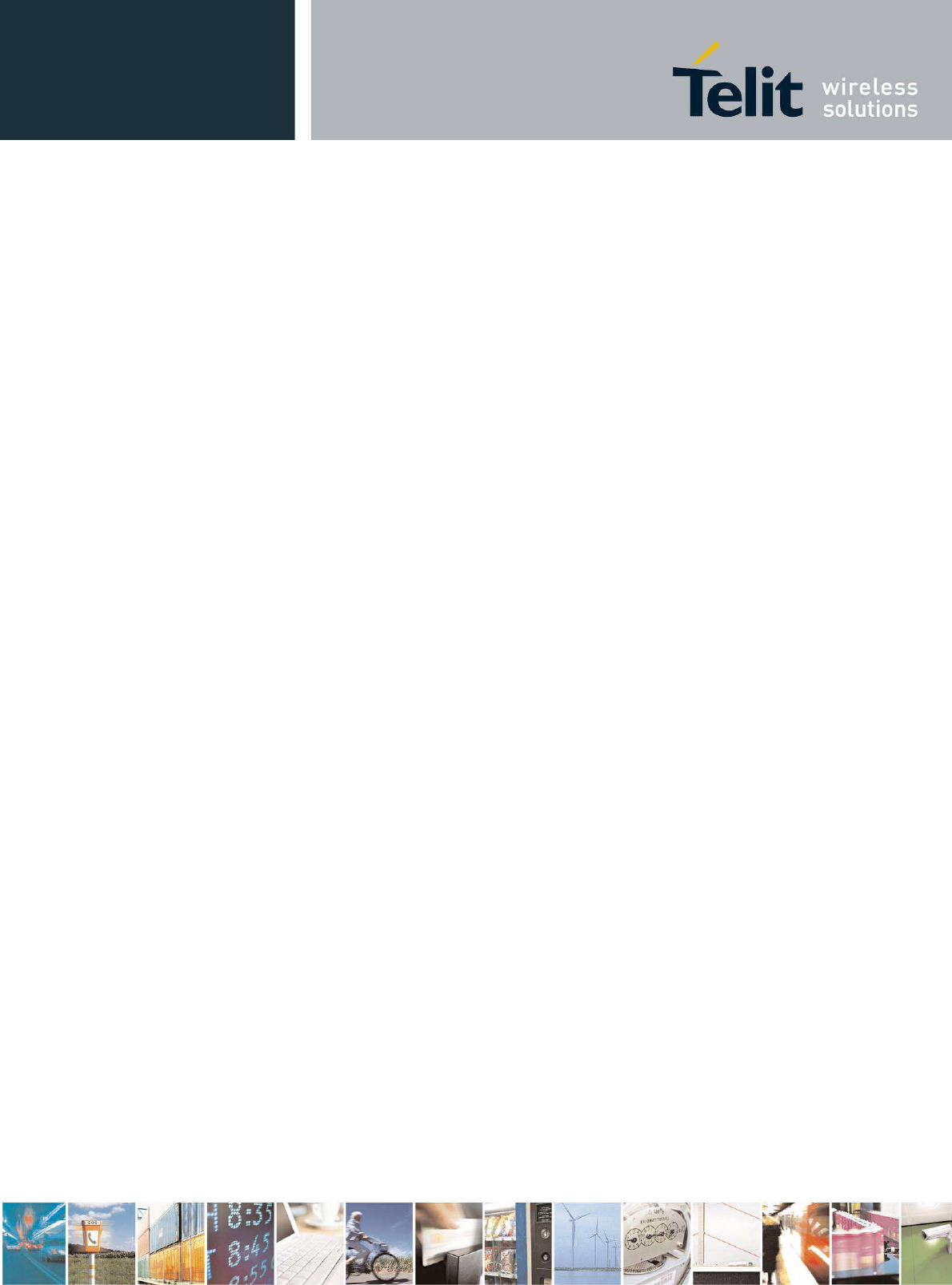
xE70-915 RF Module User Guide
1VV0301106 rev.3 – 2015-03-04
Reproduction forbidden without written authorization from Telit Communications S.p.A. - All Rights
Reserved. Page 33 of 34
9.
Glossary
ACP Adjacent Channel Power
AFA Adaptive Frequency Agility
bps Bits per second
BW Bandwidth
dB Decibel
dBm Power level in decibel milliwatt (10 log (P/1mW))
E2PROM Electrically Erasable Programmable Read Only Memory
E.R.P Effective radiated power
ETSI European Telecommunication Standard Institute
FCC
FH
GFSK
Federal Communications Commission
Frequency Hopping
Gaussian Frequency Shift Keying
I Input
ISM Industrial, Scientific and Medical
kB KiloByte
kbps Kilobits per second
kcps Kilochips per second
kHz Kilo Hertz
LBT Listen Before Talk
LGA Land Grid Array
MHz Mega Hertz
mW milliwatt
O Output
PER Packet Error Rate
ppm Parts per million
RAM Random Access Memory
RF Radio Frequency
RoHS Restriction of Hazardous Substances
RxD Receive Data
SMD Surface Mounted Device
SRD Short Range Device
TxD Transmit Data
UART Universal Asynchronous Receiver Transmitter
µC microcontroller
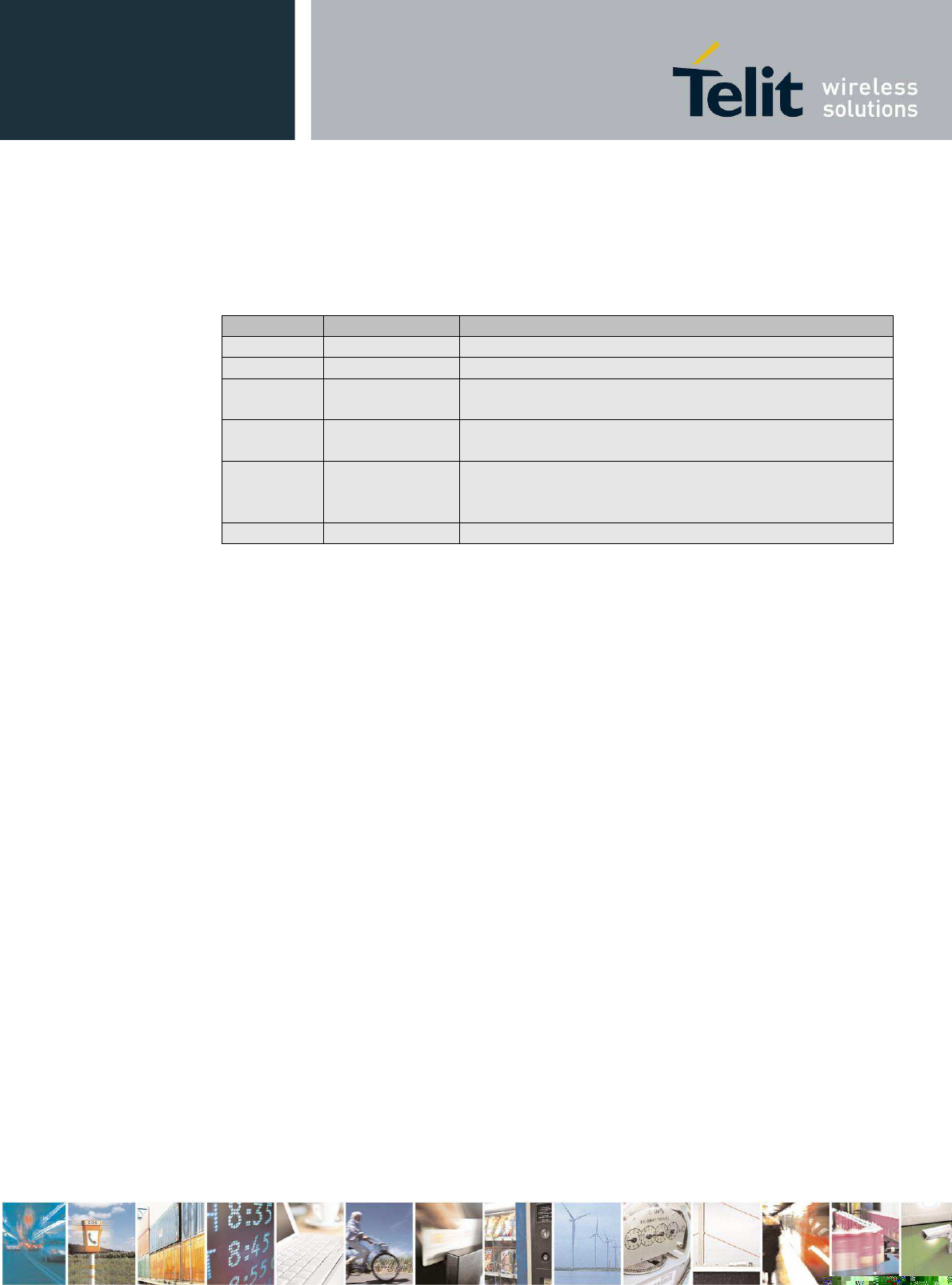
¡Error! No se encuentra el origen de la referencia.
1VV0301106 rev.4 – 2015-06-16
Reproduction forbidden without written authorization from Telit Communications S.p.A. - All Rights
Reserved. Page 50 of 50
10. Document History
Revision Date Changes
0 2013-10-11 First Release
1 2014-04-02 Updated LE70-915 Demo Kit content
2 2014-07-21 Corrected partname for L1 on page 26; updated sensitivity
and current consumption values
3 2015-03-04 Updated first channel frequency; added tolerance on
maximum output power; picture dimension adjusted
4 2015-06-16 Added Conformity Assessment Issue section; added
dimensions for inhibit area under the module; Digital
Specification table corrected